Homeschool Science Unit Checklist for Elementary and Middle School
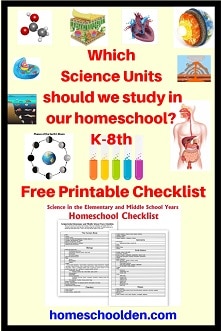
Free Homeschool Science Checklist
Click here for the free PDF: Science in the Elementary and Middle School Years – Free Homeschool Science Checklist
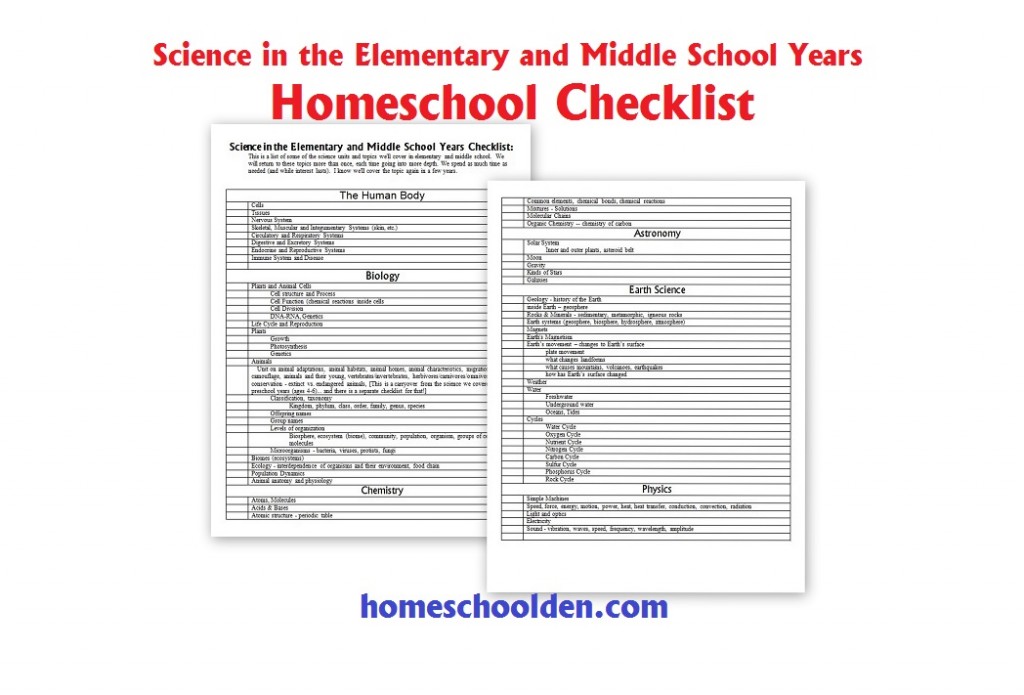
Or, click the add to cart button if you want any future updates on this free printable:
$0.00 Free Science Unit Checklist for Elementary & Middle School – A list of science units our family hopes to cover in elementary and middle school
If you scroll down, you’ll see a more narrative version of what science has looked like for our Homeschooling Family (plus you’ll find more links to helpful posts on the website.)

This coming year in the Fall of 2024, I will be offering Online Live Homeschool Classes! These classes will be for Grades 5-6 (ages 10-12); Grades 7-9 (ages 12-15); and Grades 8+ (ages 14+). These online classes will be held on Mondays and Tuesdays (possibly on Thursday); I will be teaching in-person classes here where I live the other days. Our Fall 2024 class sign up will be out soon! I will be offering chemistry, biology and history classes! Keep your eye on our Homeschool Classes Page for more information! This is schedule subject to change, but here is a sneak peek:
The big question is what science to start with, right?
Since there’s no “set” science plan, you can follow your kids’ lead! If they are interested in space or volcanoes or animals, jump right in with that!
I tried to share what our family did grade-by-grade in the FREE curriculum resource guides (the links to those are below!).
Earth Science: When the kids were little, we jumped into the hands-on units first! So, one of the very first units we did was Earth Science… and we’ve done that unit several more times as the kids got older. (This packet has a variety of materials for a mixed-age homeschool family!) Each time we did the unit again, we went into more depth (and this packet got another huge update with new materials!). This unit is super fun and hands-on, so this is a really great one to start with!

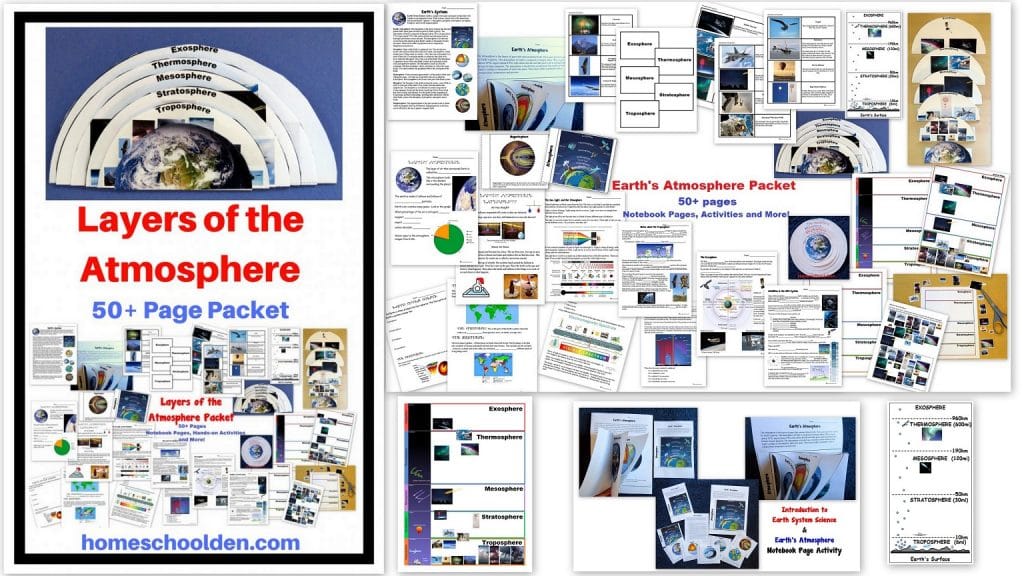
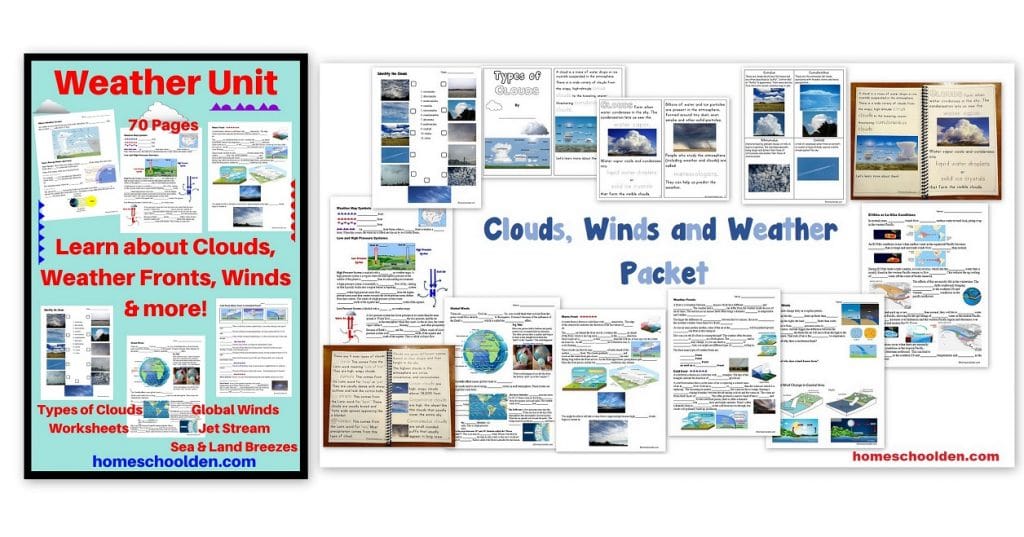
Human Body Systems: Each year we also did various Human Body Units. We started with the Skeletal System (again, focusing more on the hands-on activities when they were little)… and then reviewing that material every year or two going into more depth as they got older. Another hands-on, fun unit was the Digestive System. Again, I think my kids were in early elementary when we did this the first time, but we did it again when they were in middle school. (Finally, both my son & my daughter did some of these units again when they were 14 in early high school to go along with their HS biology course.) You can find out more about these various units in the Human Body BUNDLE here
Again, when the kids were younger, we did a lot of hands-on activities. Then when we covered the material again a few years later, we went into more depth. Here are some activities we did about the Skeletal System, for example:
Animal Studies: My kids have always *loved* studying animals… so we incorporated a lot of animal studies into our homeschool. You can check out the Big Animal BUNDLE (Animal Unit, World Animals, Rainforest Unit, Winter Unit & Animal Life Cycles here)

Biology Units: When they were in middle school, we then went into more depth. These were some of the Biology Units we did a 1. Biology Unit: Biomes, habitats, ecosystem, biological interactions, feeding relationships 2. Ocean Unit: 3. Scientific Classification, 4. Botany Unit 5. Cell Unit 6) Pathogens Unit 7) The Cell Cycle and Mitosis
We did these different years, by the way, but you can find out about the Biology BUNDLE of 7 (individual units can be purchased separately) here. 🙂
PS. Some of this material is on the high school level. I added in more material as my kids entered 9th and 10th grades. So again, these packets are designed for a mixed-age homeschool family like ours! 🙂
Here are the topics we covered in biology: 🙂 Some topics like biomes, the organelles of the cell, basic classification and plants & carnivorous plants we started covering in elementary and then reviewed/covered every year or two after that, going into more depth each time. Other topics like oceanography, pathogens and the cell cycle/mitosis we covered only in middle school (and then in high school).
Cell Unit: We went over Cells pretty much every year from the time the kids were in elementary going into more detail as we covered different types of biology (photosynthesis or botany or scientific classification (eukaryotic/prokaryotic cells) and so forth!). This is a unit we first did when the kids were in elementary (and added to every year!). 🙂
Chemistry Units: We also have done lots of chemistry units over the years! You can find out more about these chemistry units here at the Chemistry Bundle Page or you can click on the specific topics below:
- An Intro to Chemistry – How small is an atom? How does an atom compare in size to virus or to a plant cell? This introductory chemistry packet has a number of activities to help kids conceptualize just how small an atom is.
- States of Matter
- Properties of Matter Unit
- Electricity & Circuits Unit
- Chemistry Packet: The Periodic Table
- pH Scale – Acids and Bases
- Ions and Isotopes (a important topic to study late in middle school)
- Balancing Equations (late middle school, high school)
- Organic Chemistry (late middle school, high school)
Here were some of the other Earth Science and Physical Science we covered over the years. We did not tackle all of this at once, of course!! These are different units from different years. Sometimes we would circle around and cover these units in more depth (which is why many of our packets have material for younger homeschoolers and for older students!) Some, like the Energy Unit we didn’t cover until my kids were in middle school (though that meant my youngest did it a couple of times since we did science together).
If your kids are in middle school or early high school, you may want to do some Physics with them. We spent time (over the course of a couple of years) doing this Energy Unit. The kids learned about Energy, the Carbon Cycle, Renewable & Nonrewable Energy, Fossil Fuels and more:
Fossil Fuels and more:
Homeschool Science Supplies
A reader asked what types of supplies we used in our science units. These materials are listed in our packets (and there are photos and detailed explanations of what we did in the packets themselves), but if you’d like to see the kinds of supplies we used you can visit this Science Supply Page.
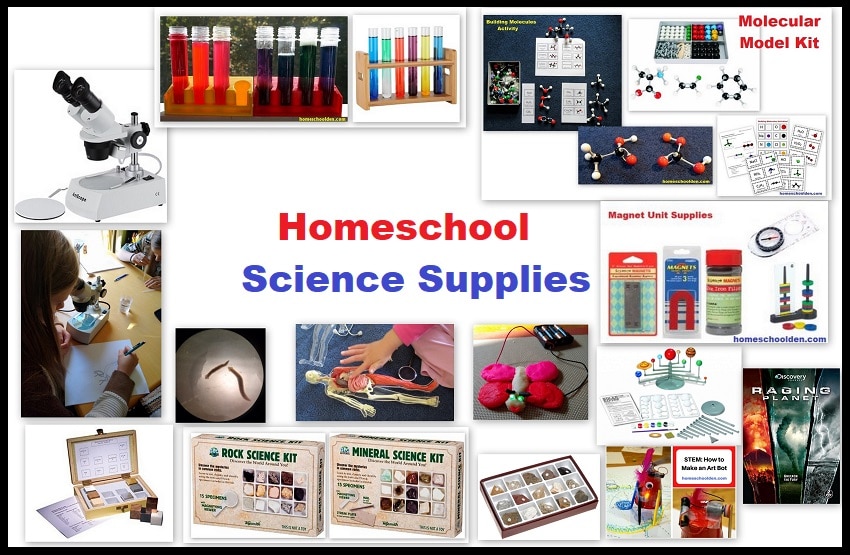
How to Create Your Own Homeschool Curriculum: K, Gr. 1 (ages 5-7) This FREE 50-page Homeschool Resource has been created to help answer some basic questions: What subjects should I teach my Kindergartner/1st Grader? Where do I start? How do I know what to teach my kids? There are suggested units and topics for the basic subject areas: Language Arts, Math, Social Studies (and Geography), Science, and Other (Holidays, Music, Art, etc.)
How to Create Your Own Homeschool Curriculum: Gr. 2-3 (ages 7-9) is also now available (also a free resource packet). At some point, I also plan to create a curriculum guide for Grade 4-5, followed by Grades 6-8).
- Creating a Homeschool Curriculum for Grades 6-8 – Free Resource Guide (ages 11-14 or so)
You might want to browse through the Science Unit page, History Unit page, or Language Arts page for links to dozens of resources. We also have a Music Curriculum for Beginners that might be of interest.
I made a video about Homeschool Science in the Elementary and Middle School Years. It was one of my first videos… so it’s not exactly the most polished, but you have to start somewhere, right?!! 🙂 It highlights some of the activities and experiments we’ve incorporated in our science units over the years. I added in the blooper at the end! 🙂 And the link I mentioned in the video is here: homeschoolden.com/ScienceUnits
If you are new to homeschooling, you might not know quite where to begin. There is no “set” homeschool curriculum. I suggest you start with your child’s interests… then go from there!
Homeschool Science Checklist
The Narrative Version!
What science units have we covered?
The links below will take you to the blog post with pictures/description/hands-on activities that we’ve done for each of these units. 🙂 (Our links are green… um… not sure why, but it’s from the days I was writing under the Parents Magazine umbrella!! Clearly, I lack coding expertise!! Lol!)
As many of you know, we have spent a lot of time on Earth Science over the years — covering topics like the solar system, Earth’s geologic timeline (eons, periods, etc.), plate tectonics, volcanoes, earthquakes, etc. We did tons of hands-on activities for this unit. (This is probably our most popular packet and has material appropriate for most any age… since we have added in new material and have studied Earth Science several times now! There are so many fun, hands-on activities you can do in this unit, so my kids have always loved studying this topic!). We have also studied Rocks and Minerals and the Rock Cycle.
We have also studied the other major Earth Systems (biosphere, hydrosphere (oceans!), atmosphere). Our study of the biosphere included biomes, habitats as well as feeding relationships, food chains and food webs. That’s available in our Biology Packet. We did a huge study of Earth’s oceans (hydropshere… ie. our Ocean Packet) – studying everything from marine habitats and features of the ocean floor to ocean life (including the kids’ favorite – bioluminescent creatures!). We also did a big study of the Layers of the Atmosphere. From there, we have gone on to talk about Weather and Natural Disasters.
Changing the subject back to biology… the kids have always loved animals so when they were younger we did a study of Animals (our Animal Packet) doing basic classification (feathers/fur/scales, vertebrates vs. invertebrates, insects vs. spiders, animal homes and shelters, animal tracks, etc.). We also talked about the World Animals (animals from the 7 continents). We also talked about animal Life Cycles when the kids were younger (different stages in the life cycles of the chicken, sea turtle, frog, mosquito, butterfly, dragonfly, bee, mouse, and ladybug.) Last year, we did a more in-depth discussion of Scientific Classification and Taxonomy (on the middle school/early high school level). We have also touched on Botany, though we’ll be going into more detail this coming year.
This year we started delving into Environmental Science. My 5th grader did a unit on the Water Cycle (including ground water). Then we moved on to what happens to our waste doing a unit on Trash & Recycling. We learned so much — including what all the recycle symbols mean on plastics and the huge problems looming for the U.S., Australia and elsewhere as China stopped taking recyclable materials. Then we moved on to the Carbon Cycle. We talked about Nonrenewable Resources (like coal, oil & gas) and then went on to explore Renewable Resources.
We’ve done a Study of Cells (cell organelles and their function, plant vs. animal cells, Eukaryotic vs. Prokaryotic cells, etc.) several times through the years. And then from there we often talk about human body, tissue, organs & body systems. We usually dive into a study of one of the body systems in depth such as the skeletal system. Each year we’ve studied a different body system so we’ve also studied the digestive system and circulatory system and touched on the brain and nervous system and the muscular system.
We have done quite a number of different units in Chemistry as well. When the kids were younger we talked about the States of Matter. We have also done a unit on Physical and Chemical Properties of Matter followed by a unit on Electricity and Circuits (which the kids loved, loved, loved!). This past year we did a fabulous unit on the Periodic Table and the kids really “got it” with the activities we did. Our Chemistry Packet has chemistry cards and Bohr Diagram cards for the first 20 elements. I’m itching to share a picture with you, but I’ll have to let you go check out the store or the actual chemistry post!)
Physics – We have done quite a number of physics units over the years. When the kids were little we did a fun unit on Simple Machines. We weave various engineering challenges into our homeschooling. Here’s a fun post with 7 fun STEM Engineering Challenges for kids. 🙂 Last year, we did a huge Physics Unit with my son (age 14). We used a science textbook and online video lectures for that.
If you are interested in checking out our Science Packets, be sure to visit our store. We have packets for almost all of the science units in bold above and they include worksheets, notebook pages, interactive notebook pages and (very important to us!!) lots of hands-on activity ideas!! We have a number of bundles available, so be sure to check into that if you are interested.
These posts might really help you get a feel for what science looks like for our family (since we do science together as a family). We often review topics from year to year (for example, we go over the organelles of the cell most every year even if we don’t do an entire unit on it).
Homeschool Science Year in Review (Grades 9, 7, 4)
Science Year in Review 2016-2017 (Grades 8, 6, 3)
Science Year in Review 2015-2016 (Grades 7, 5, 2)
What are we studying for science this year?
We are starting with an activity about Where We Live (from the universe, galaxy, planet on down to the continent, country, state, city, street, home!). There’s a booklet and an interactive notebook activity. 🙂 I had a team of homeschoolers from around the globe who have been helping me to make this work for Australia, the UK, Canada, Europe, and New Zealand.
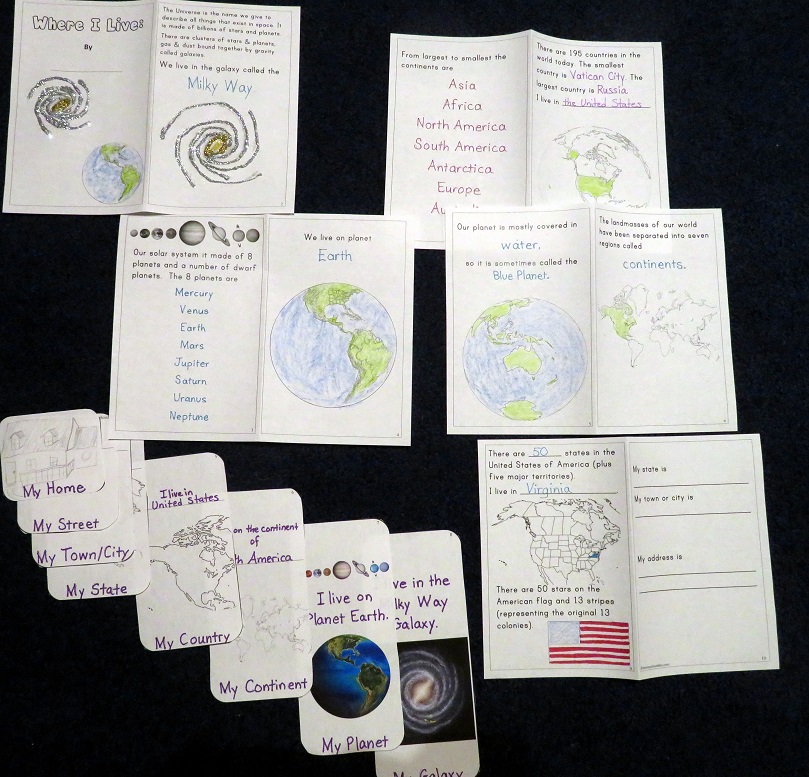

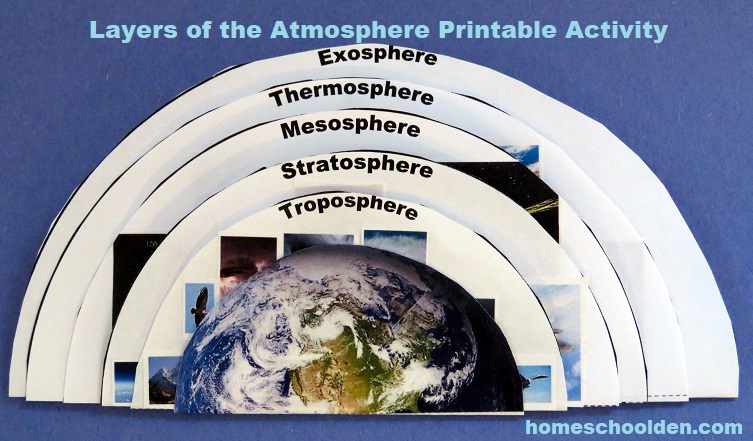
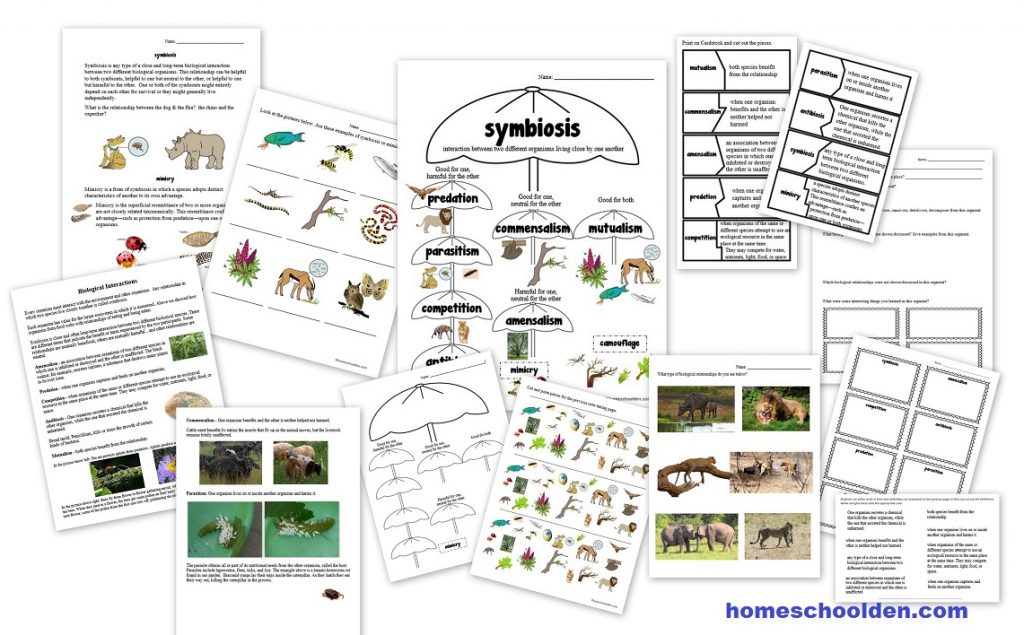
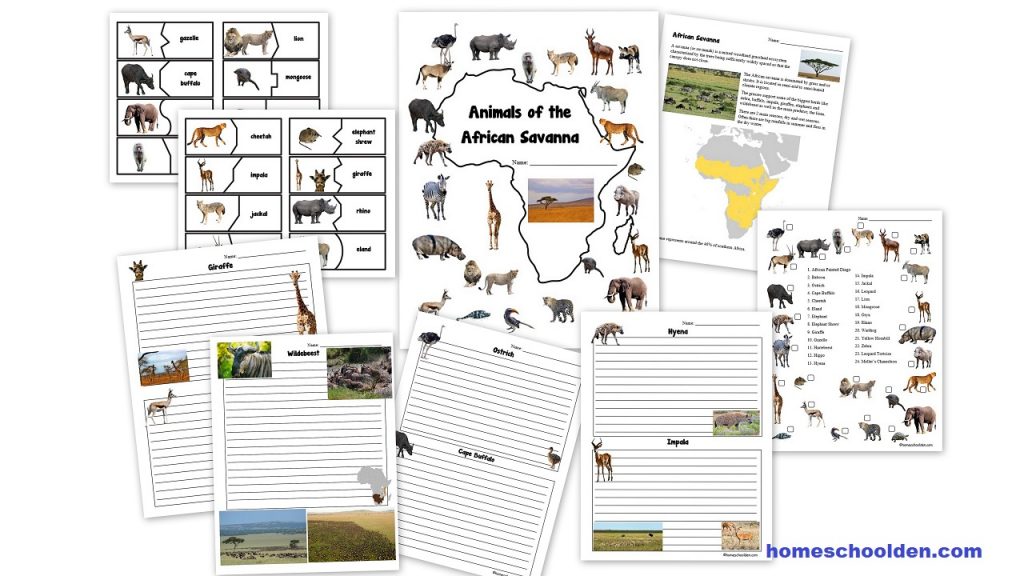
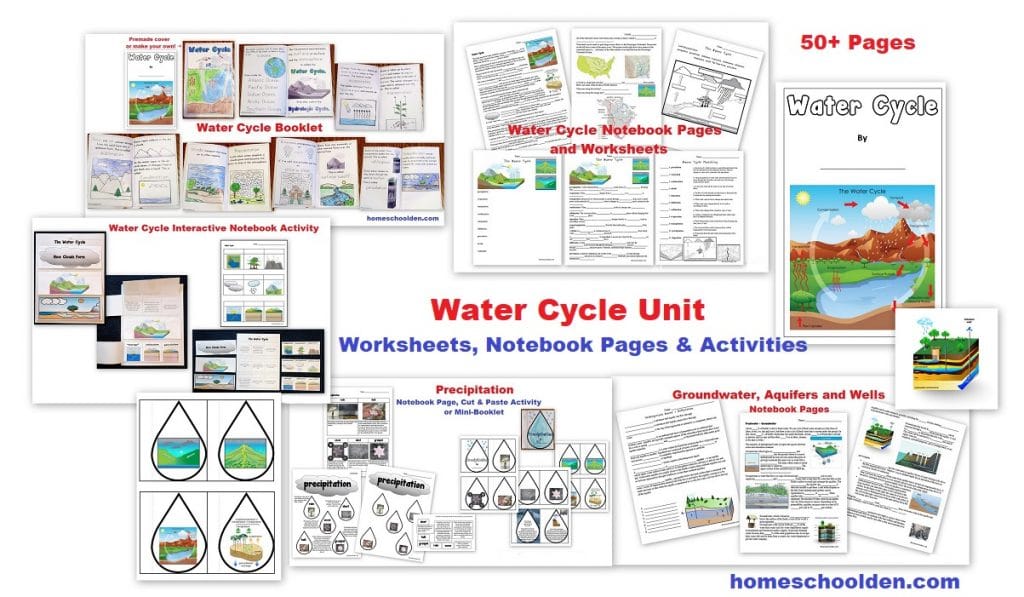
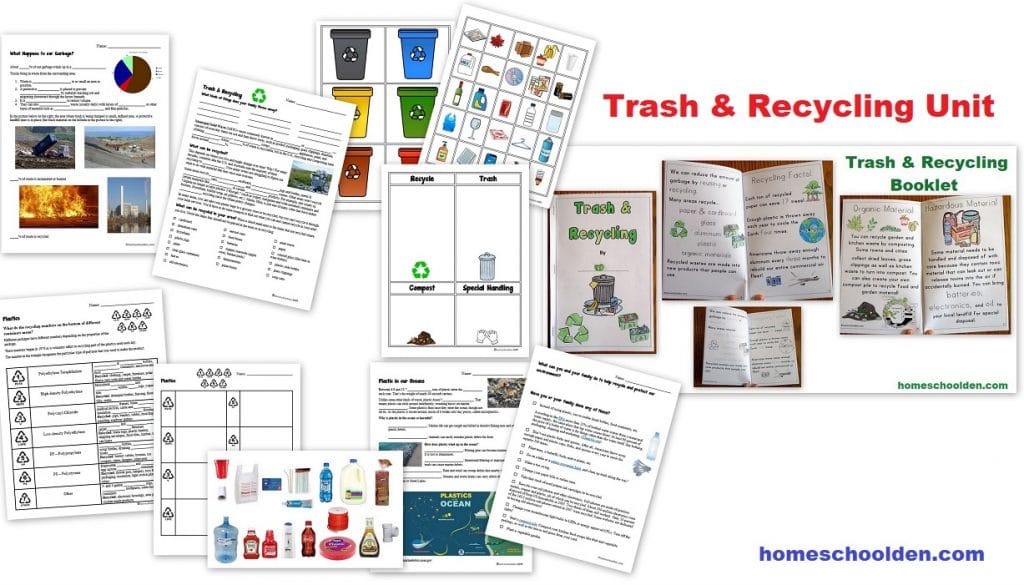
Here are some of the units we’ve been studying in the past couple of years (elementary/middle school levels):
Earth Science Unit: Last fall, we had a ton of fun with our Earth Science Unit… and added in lots of new hands-on activities and interactive notebook pieces that the kids added to their science notebooks. This time around (we’ve done this unit several times… with the kids as preK/early elementary, then a few years later and this past year we did it as a “science club” (see posts about that starting here: Week 1) with a group of kids ages 9-14. Fun!
This unit is a wonderful one to start off your homeschool journey (if you’re new to all this) because it works so well for any age!! When my kids were younger, we obviously spent more time on the “hands-on” activities and less time on the meat-and-potatoes. Then last year, we went into a lot of depth about how/why things happen!
We spent time studying chemistry again. The kids learned about the periodic table and we used a chemistry video series that the kids really liked.
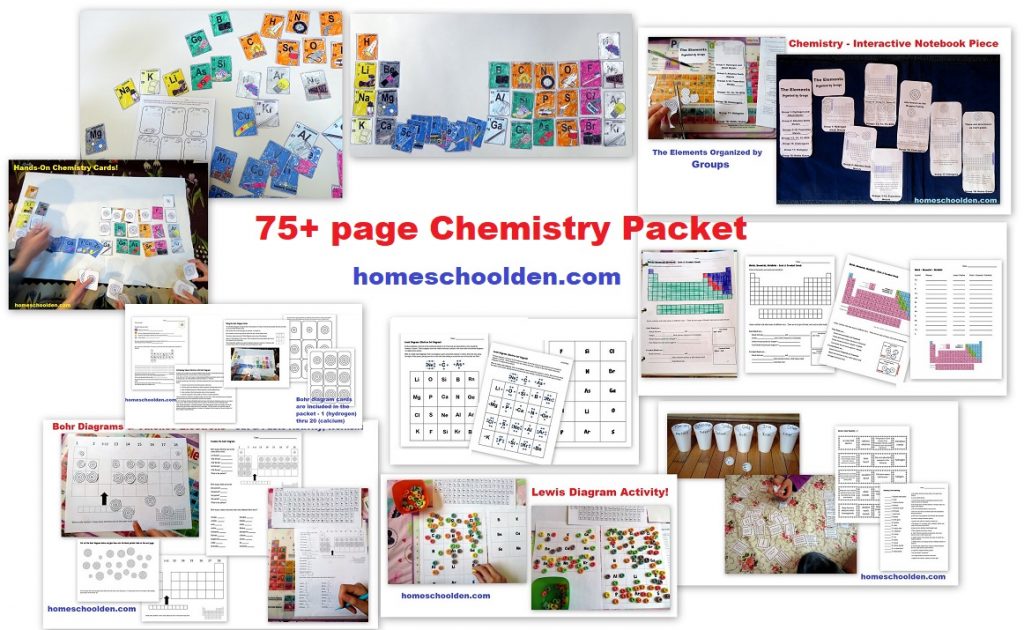
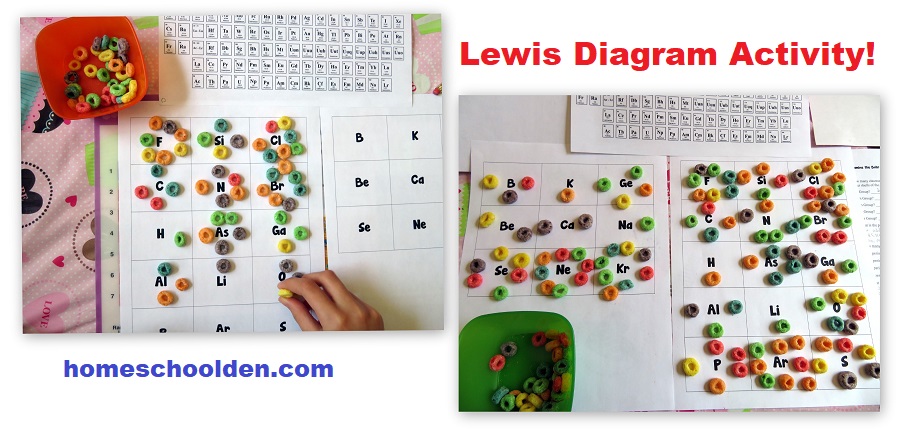
Last year ED worked on a unit on Land Animals — covering things like animal adaptations, animal habitats, animal homes, animal characteristics, migration, camouflage, animals and their young, vertebrates/invertebrates, herbivores/carnivores/omnivores, conservation – extinct vs. endangered animals, etc. She’ll keep working on that into next fall. (She read a book by Joan Gottlieb — Land Animals (affliate link), which she is reading on her own.)
If you’re interested, you can check out our Animal Packet here: It’s a unit I added to almost every year because my kids loved studying animals so much!! It includes topics like types of animals, animal characteristics, insects vs. spiders, domesticated vs. wild animals, animal tracks, animal shelters and homes etc.
Then we did a Biology Unit on the Biosphere: biomes, habitats, feeding relationships, biological interactions etc. 🙂 We covered a lot!
We went on to do a unit on Ocean Systems & Ocean Life (including tides, currents, ocean zones, as well as animal life). This unit was *amazing!!* We all learned so much. 🙂
States of Matter: We started off the school year with a unit on the States of Matter and Changes in States of Matter. My youngest daughter (age 8) really needed to learn this material and my older kids needed a refresher. In this unit we did a TON of hands-on activities. 🙂 We finished talking about some of the properties of air (it takes up space, has weight) and looked at the composition of air (and did a graphing activity for that). And then talked about some of the properties of water (adhesion, cohesion, buoyancy, etc.)… And went on to talk about the changes in states of matter (really focusing on a couple terms they didn’t know well – sublimation and deposition)! I have an exclamation point because we did some activities that the kids adored! Find out more here:

This was recently updated with some new materials when my youngest went through this unit.
Electricity and Circuits: Then we dove into a very hands-on unit to learn about electricity and circuits. The kids LOVED this unit!! (So did I! It was pretty fun!) We did a half-dozen hands on activities as we learned about electricity, batteries, amps, ohms, simple circuits, parallel circuits, resistors, and basic symbols so they could sketch out (very basic) schematics. The best thing about this unit, though was how hands-on it was!
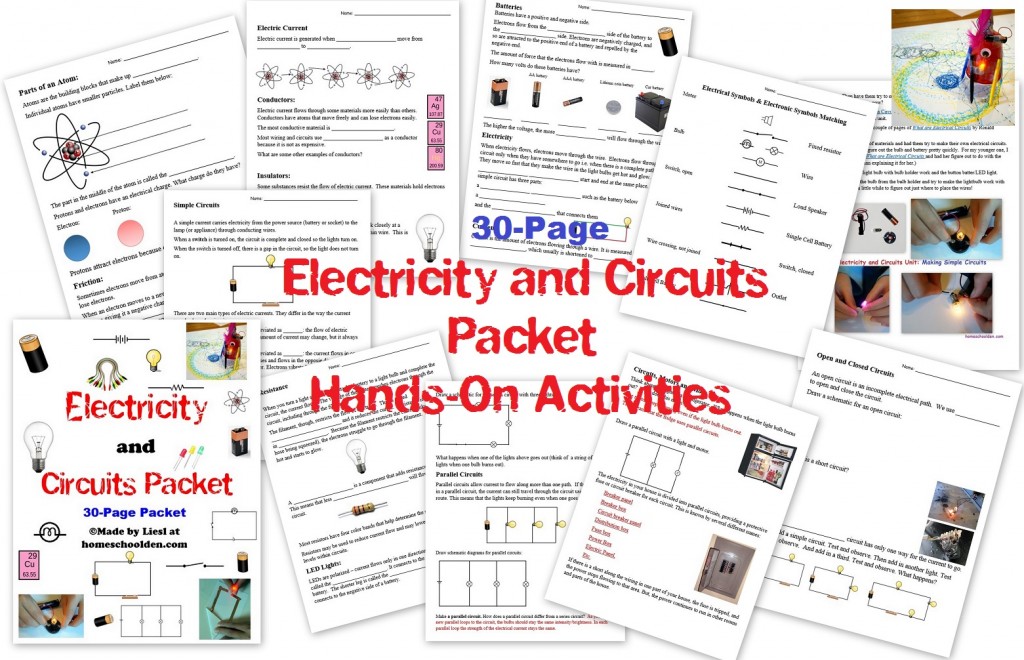
We have started studying the Human Body Systems again. We spent some time reviewing the organelles of the cell again. We did a full study of cells a couple of years ago. Our cell packet is now over 100 pages.
Then we talked about the Human Body Systems again (in general).
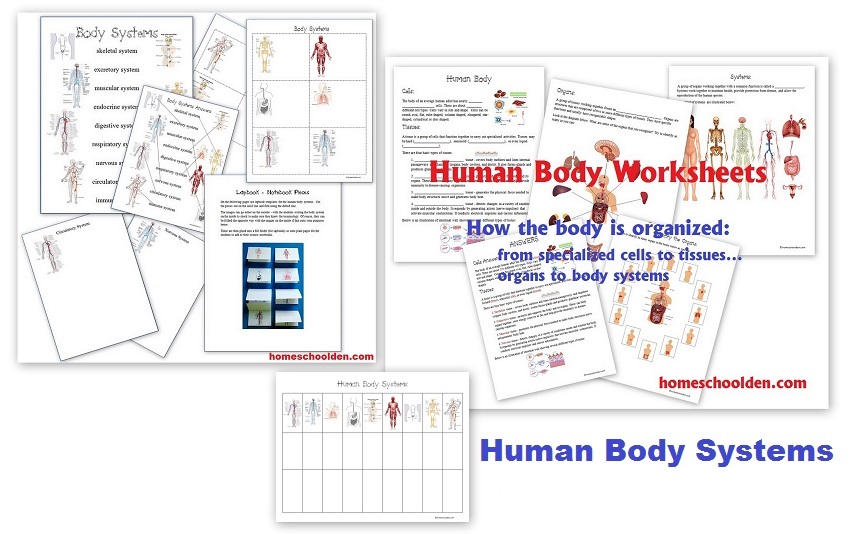
The packet will be shared then too (though contact me if you need it earlier.) ~Liesl
From there we’ll talk about the muscular system. Then we’ll shift gears completely and will probably do an astronomy unit. (That’s my thought at this point!!)
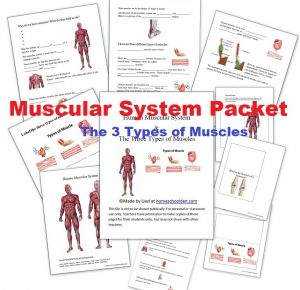
Homeschool Science Supplies
A reader asked what types of supplies we used in our science units. These materials are listed in our packets (and there are photos and detailed explanations of what we did in the packets themselves), but if you’d like to see the kinds of supplies we used you can visit this Science Supply Page.
You might also enjoy our new Science Unit Tab — with links to ALL of our Science Units!! 🙂
Here are some Quick Previews of some of our Science Packets
Layers of the Atmosphere Quick Preview
Chemistry Packet Quick Preview
States of Matter – Quick Preview
Human Body Systems Quick Preview
Skeletal System Packet – Quick Preview
Digestive System Packet Preview
Circulatory System Packet – Quick Preview
These 5 packets are included in our Big Animal BUNDLE
- Animal Packet Quick Preview
- World Animal Packet Quick Preview
- Rainforest Packet Quick Preview
- Life Cycle Packet Quick Preview
- Winter Packet and Hibernation Unit Quick Preview
Scientific Classification and Taxonomy Quick Preview
Electricity and Circuits STEM Unit Quick Preview
Simple Machines Packet Quick Preview
We’ve made a number of science packets that are available here at our blog. These links will give you more information:
Skeleton Lapbook and Notebook Pages
Earth Science Packet: Plate Movement, Earthquakes Volcanoes and more!
Animal Unit: Vertebrates and Invertebrates Worksheet Packet: (By the time we finished the unit, it actually turned out to be more than 40 pages!)
Plus, we have a Weather Unit, A packet on the Layers of the Atmosphere and lots of animal classification worksheets and printables. We also have some notebook pages I made for the kids on chemistry, animal characteristics, animals and their groups… and much more! 🙂 Again, the easiest place to scan through all our posts at one glance is using the Science Unit Tab above!!
A few weeks ago I also made a Language Arts Checklist. You might want to check out that post as well. Plus, this post that talks about the language arts curriculum we use in our homeschool is pretty popular too: Our Homeschool Language Arts, Spelling and Grammar Curriculum.
You’ll find our the Homeschool History Checklist and History Activity List here. You will find a list of our history posts and units in the History Unit Tab above. We have tons of free notebook pages on everything from Ancient Egypt and Ancient China to the Civil Rights Movement and tons more!!
See you again soon here or over at our Homeschool Den Facebook Page! You might also want to check out some of our resources pages above (such as our Science, Language Arts, or History Units Resource Pages) which have links to dozens of posts. You might want to join our free Homeschool Den Chat Facebook group. Don’t forget to check out Our Store as well. ![]()

Happy Homeschooling!!
~Liesl
Disclosure: Please note that some of the links above are affiliate links, and at no additional cost to you, I will earn a commission if you decide to make a purchase.

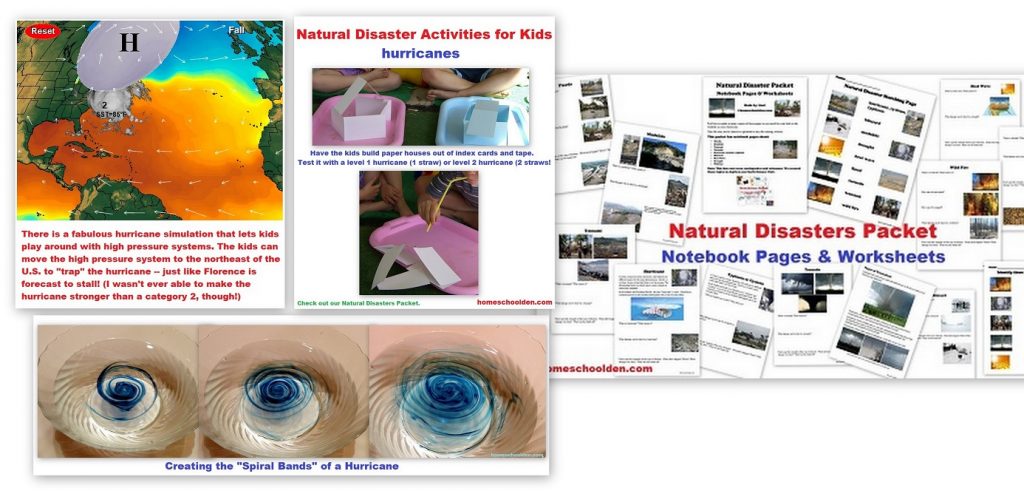

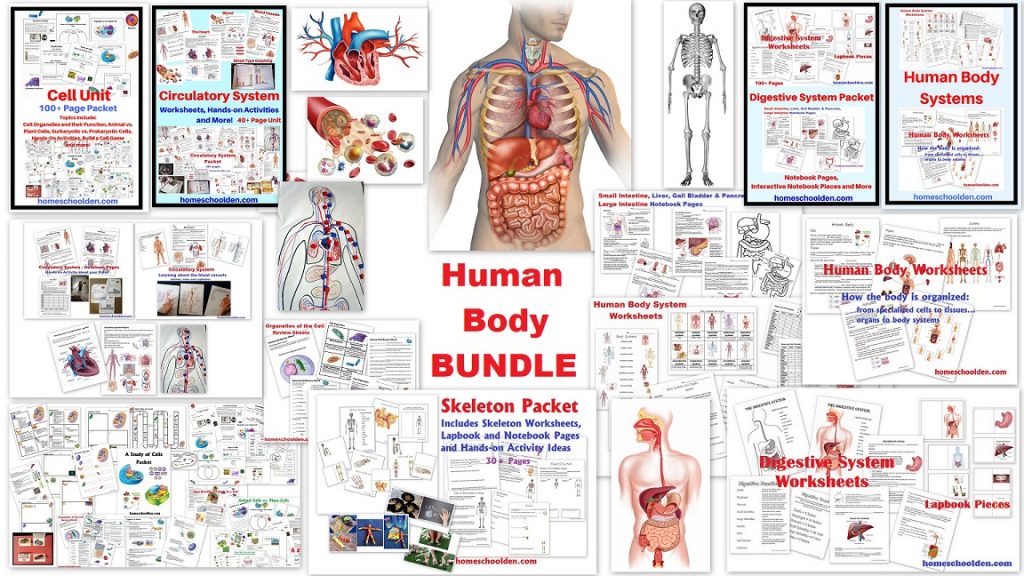
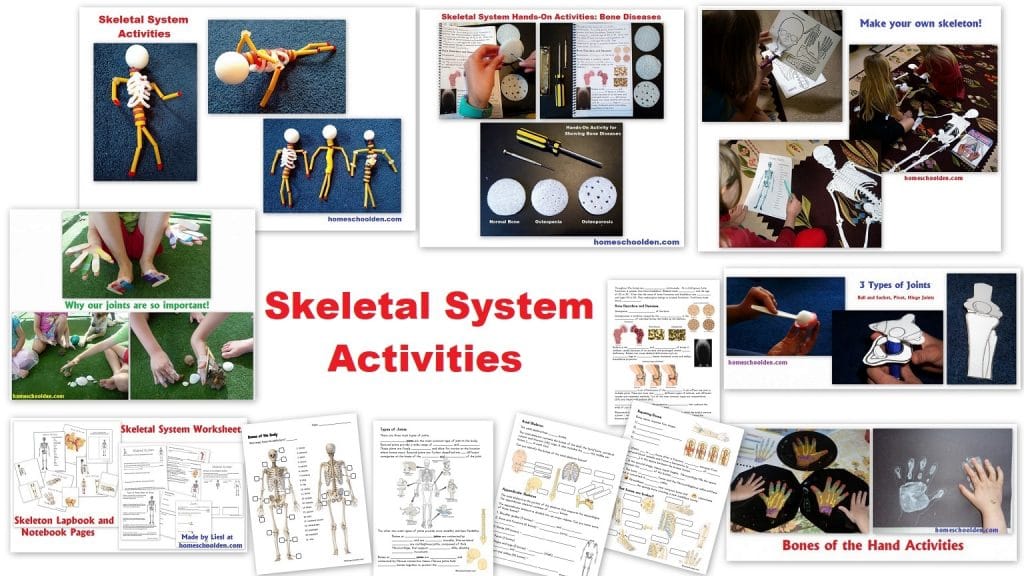
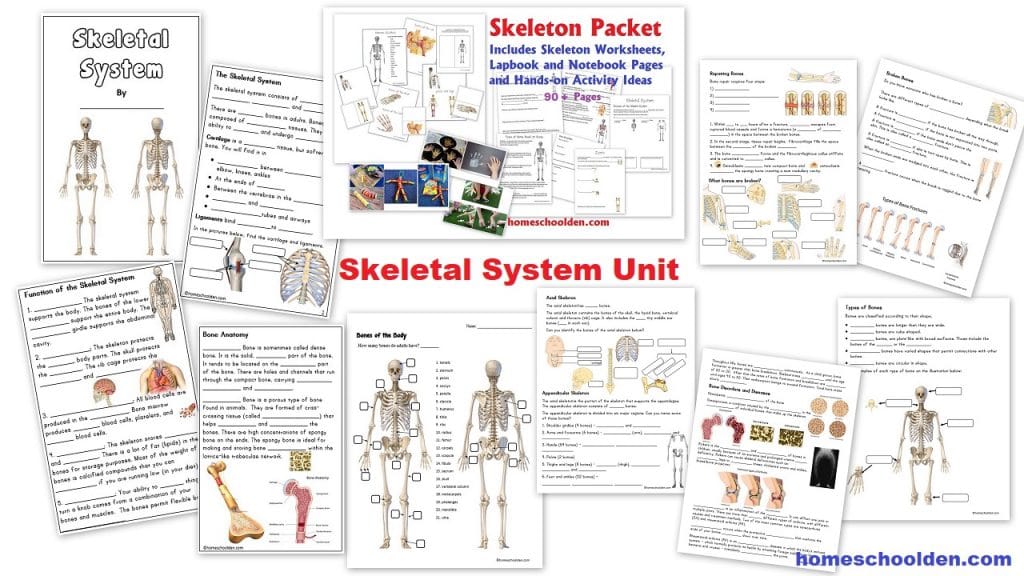
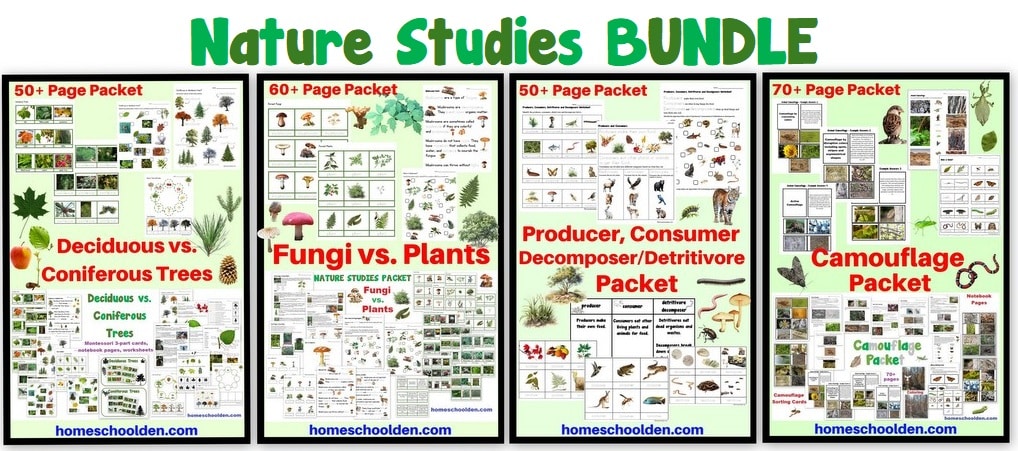
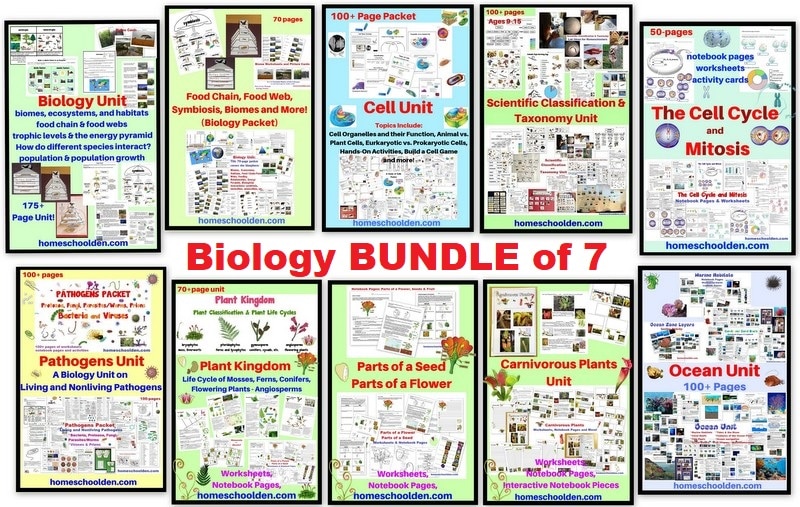
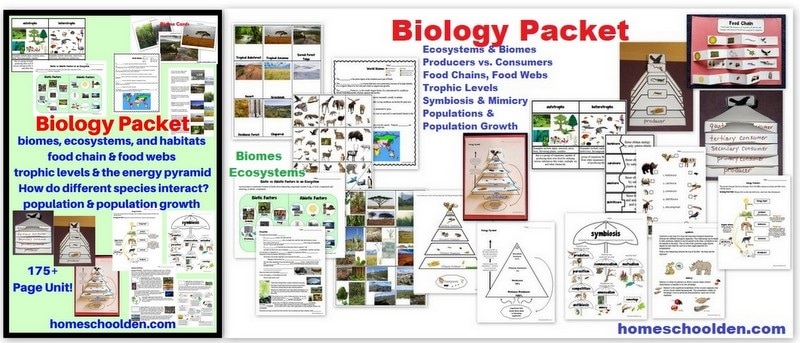
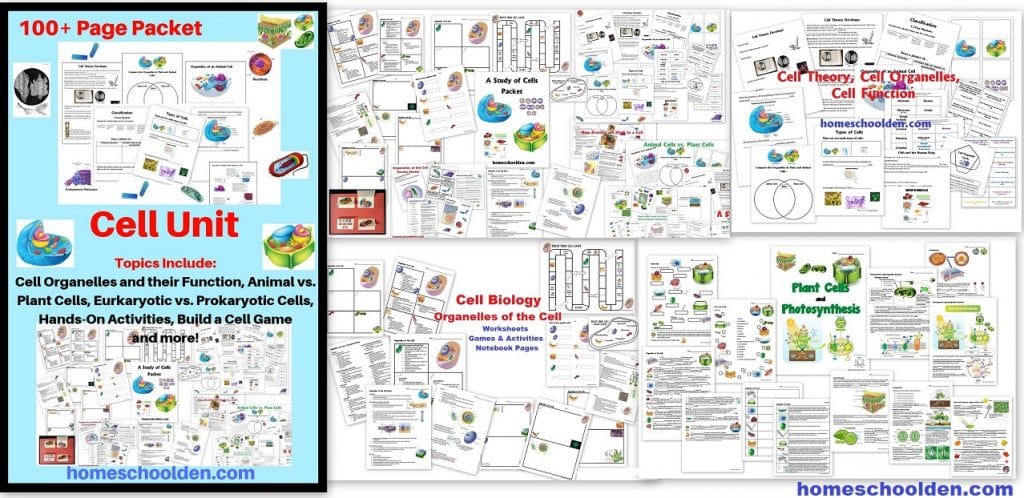

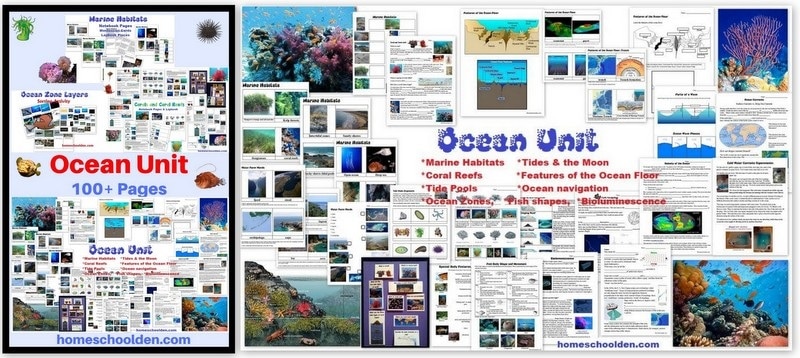
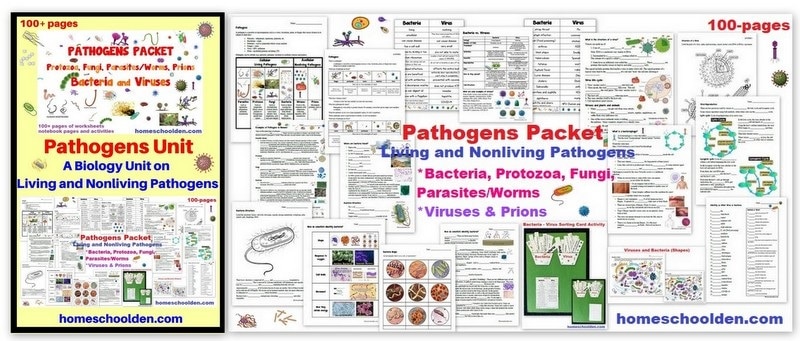

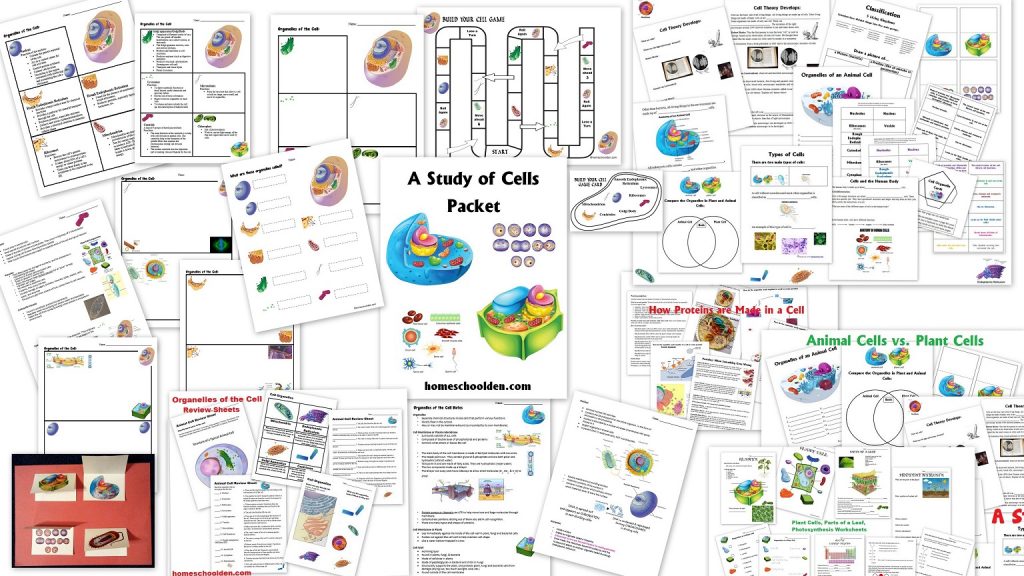
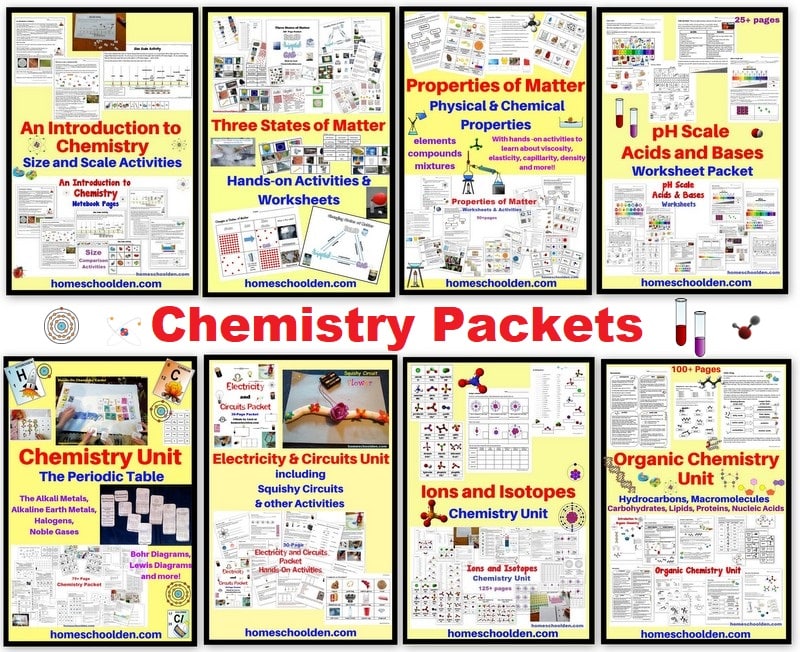
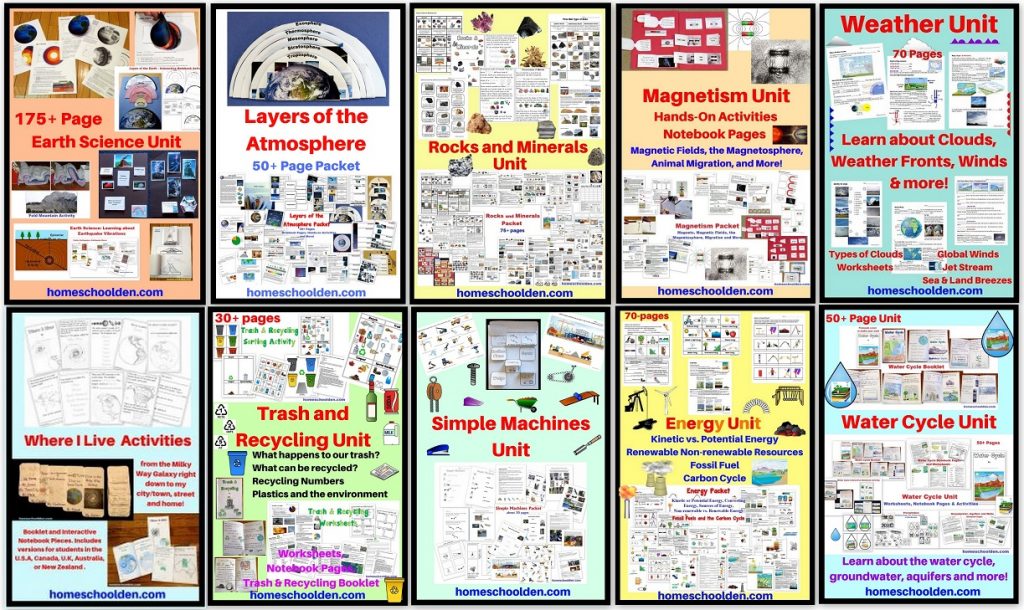
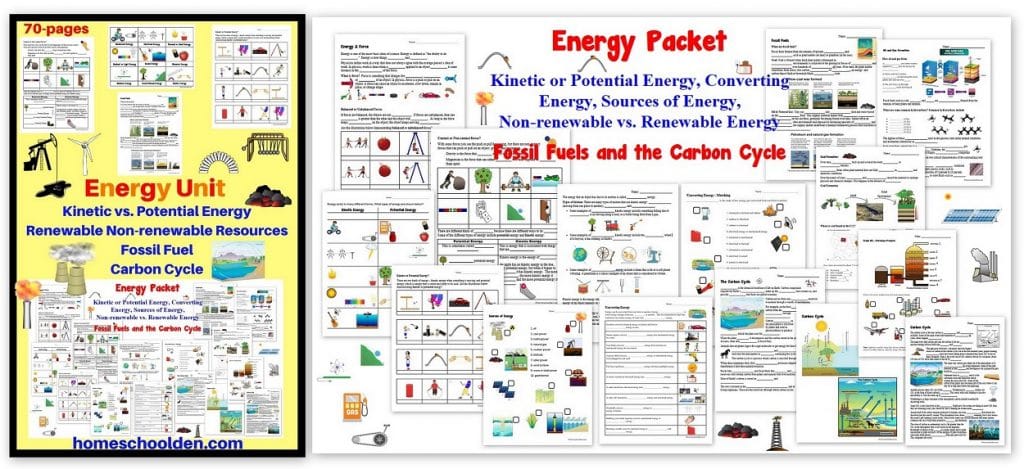
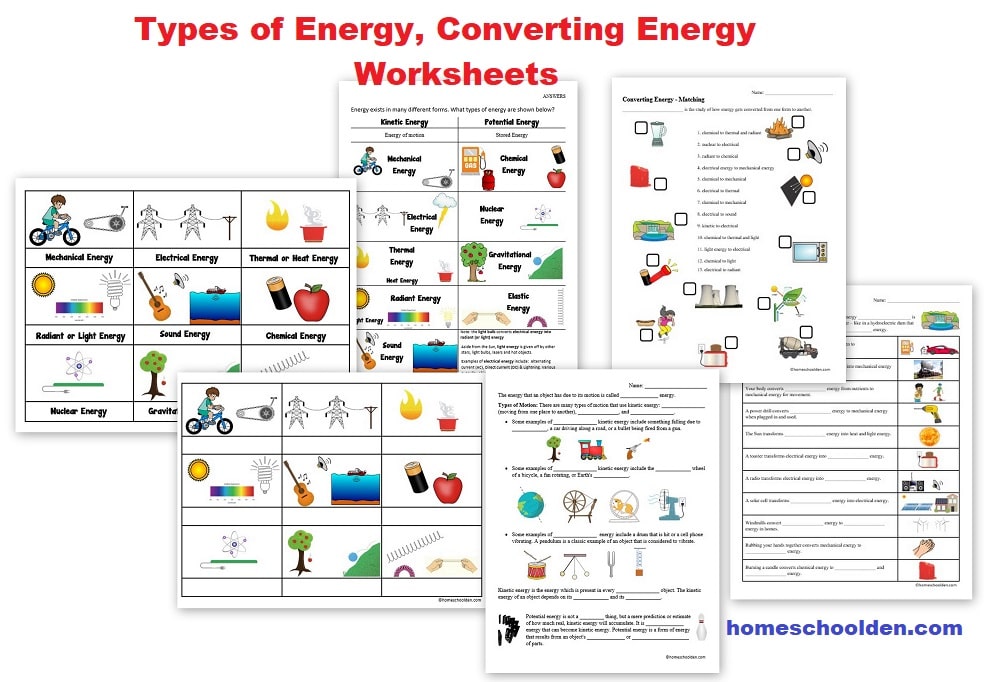

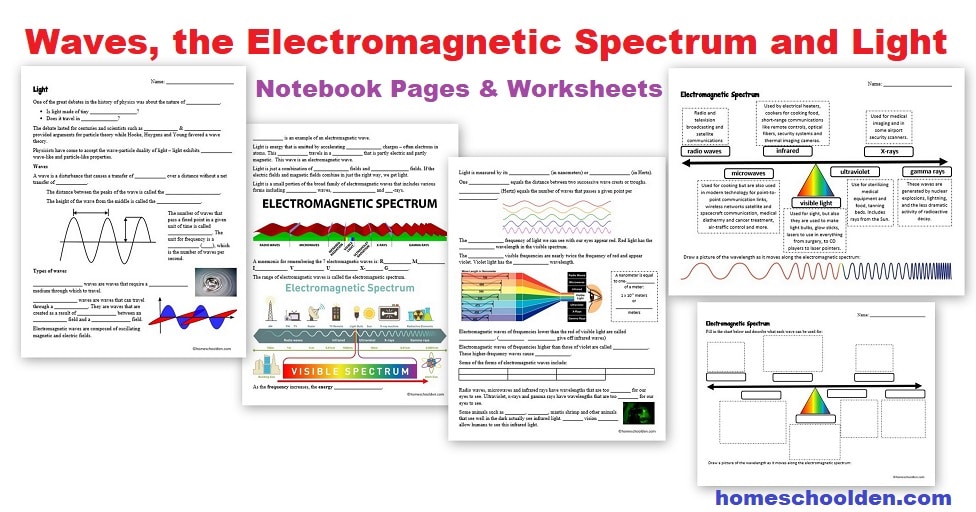
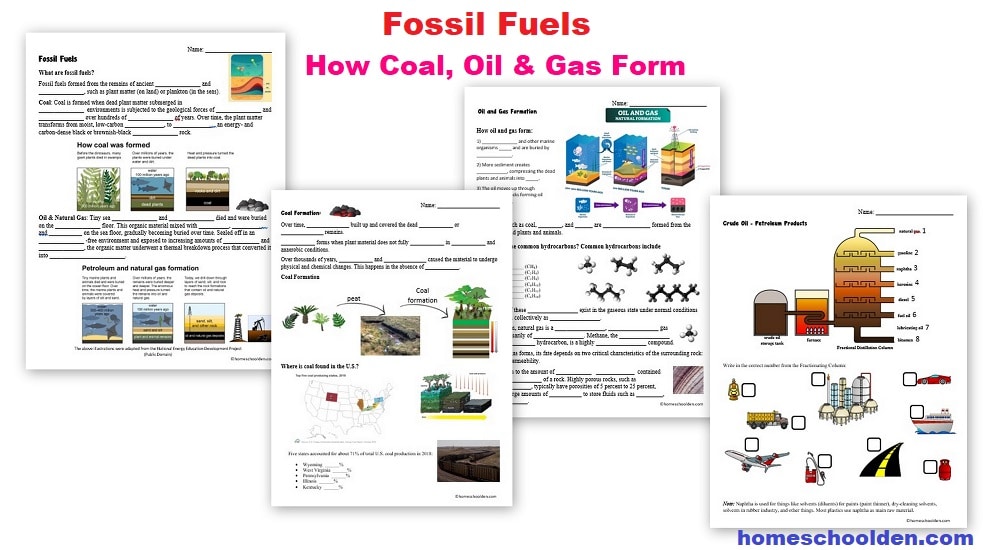
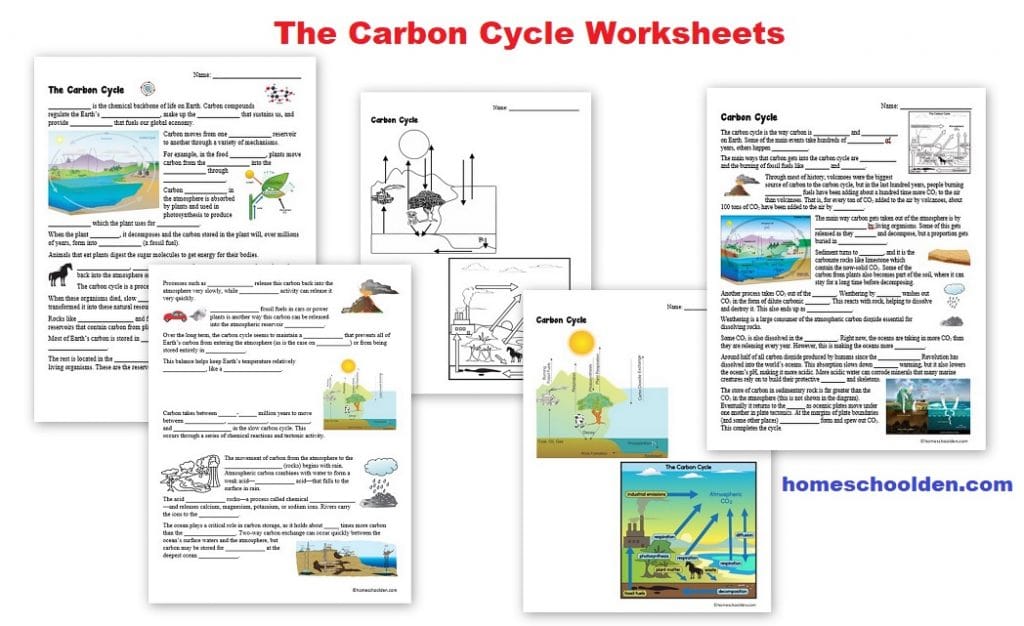
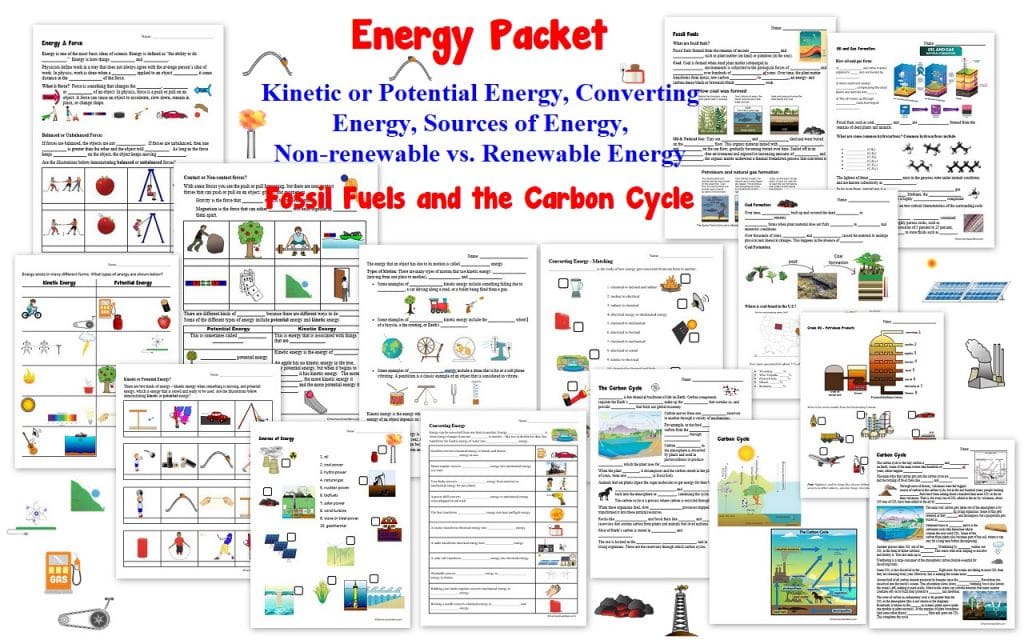
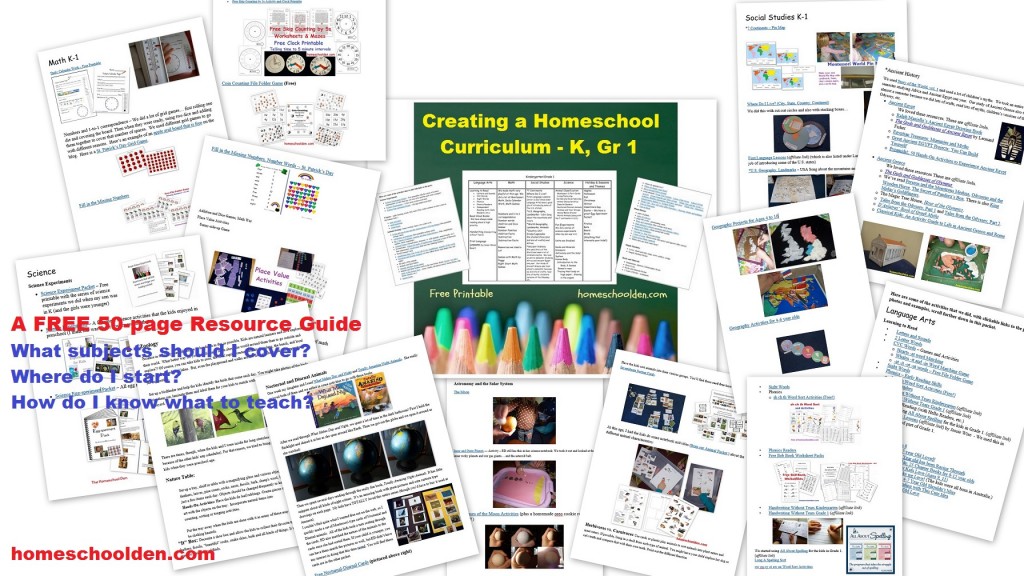
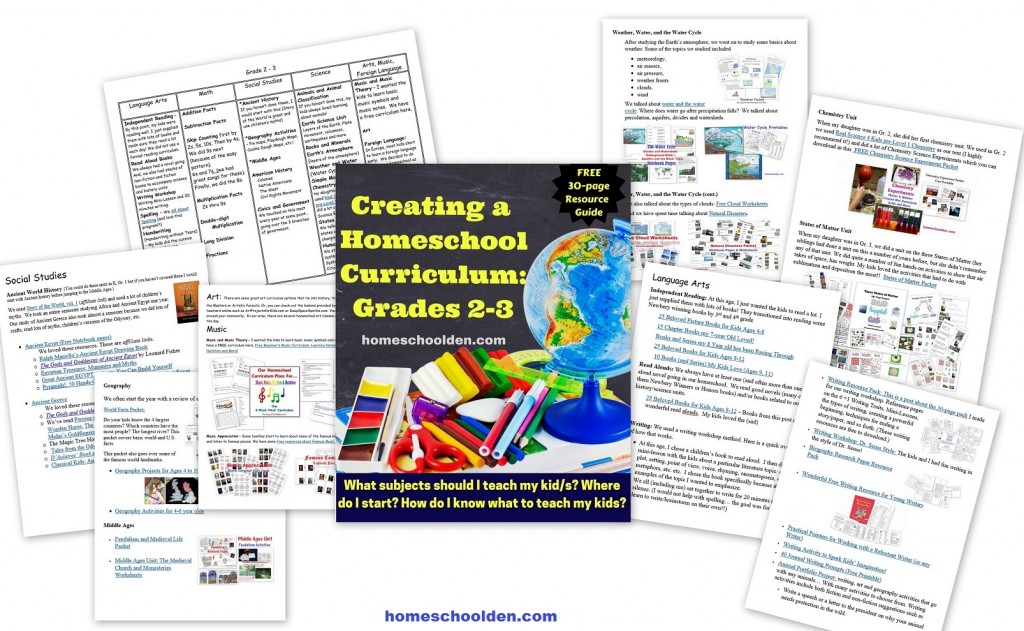
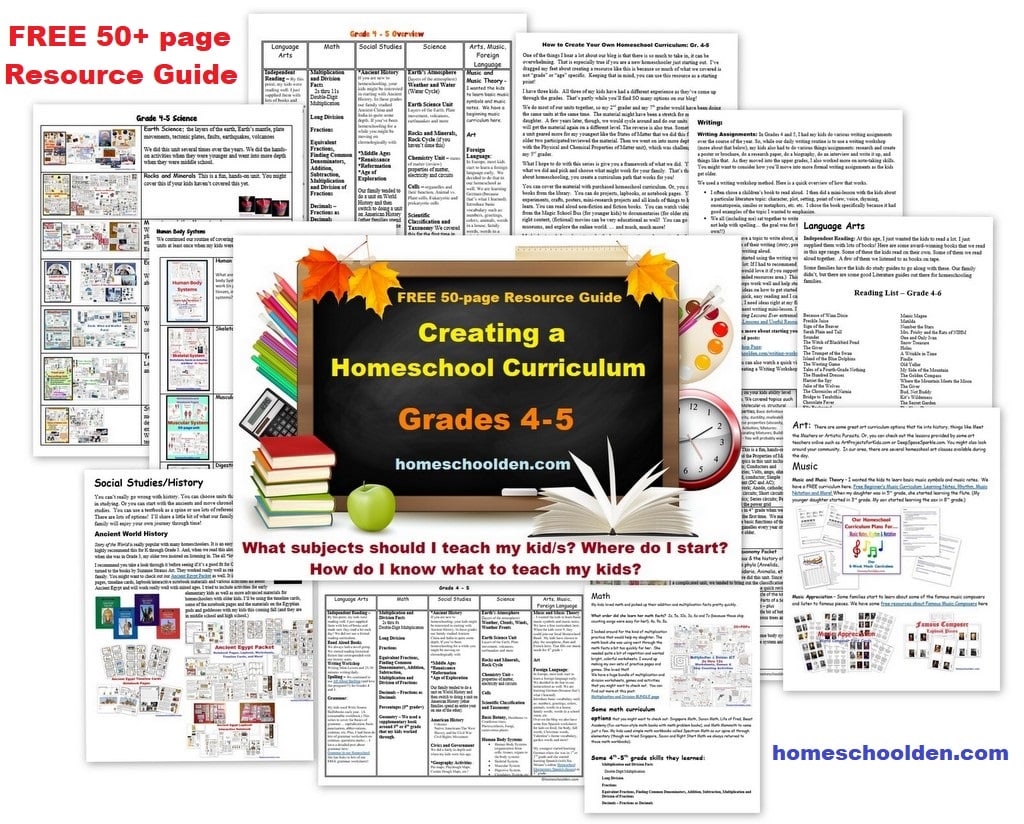
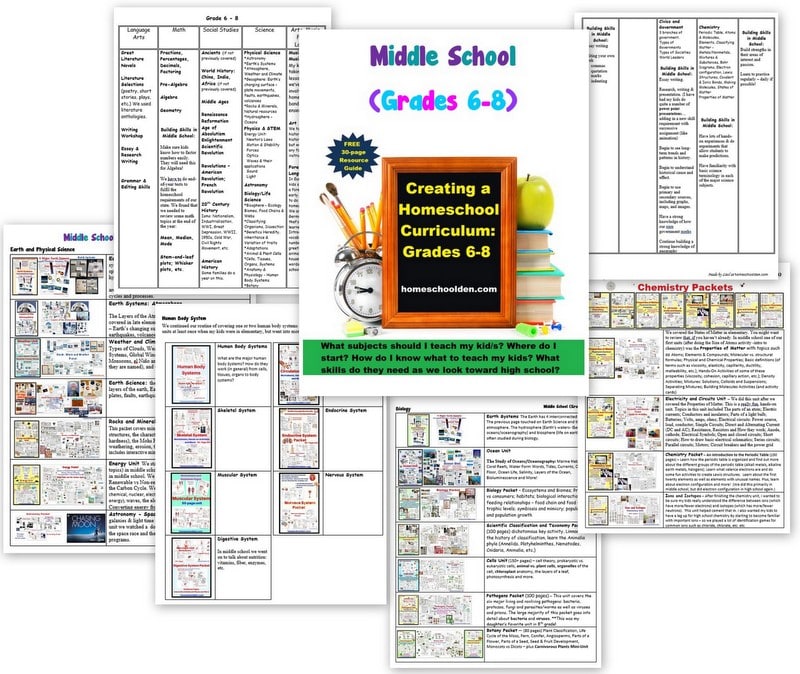
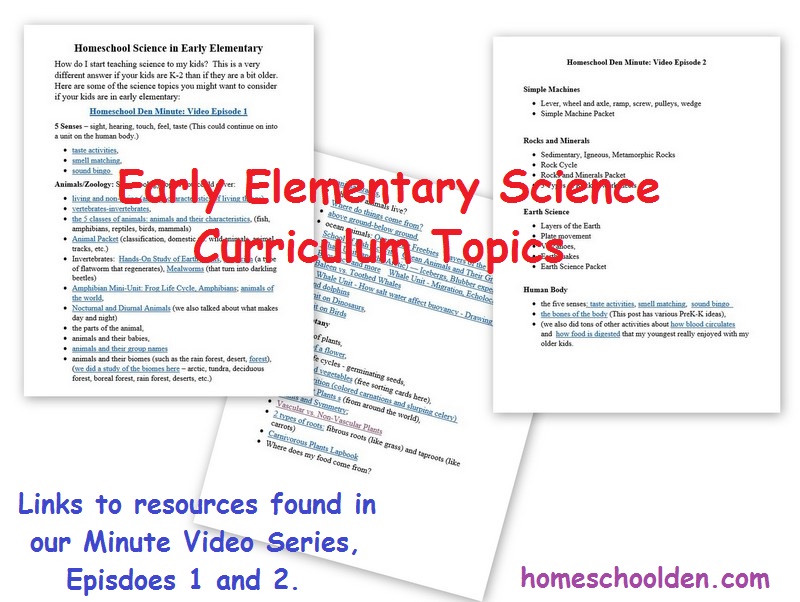
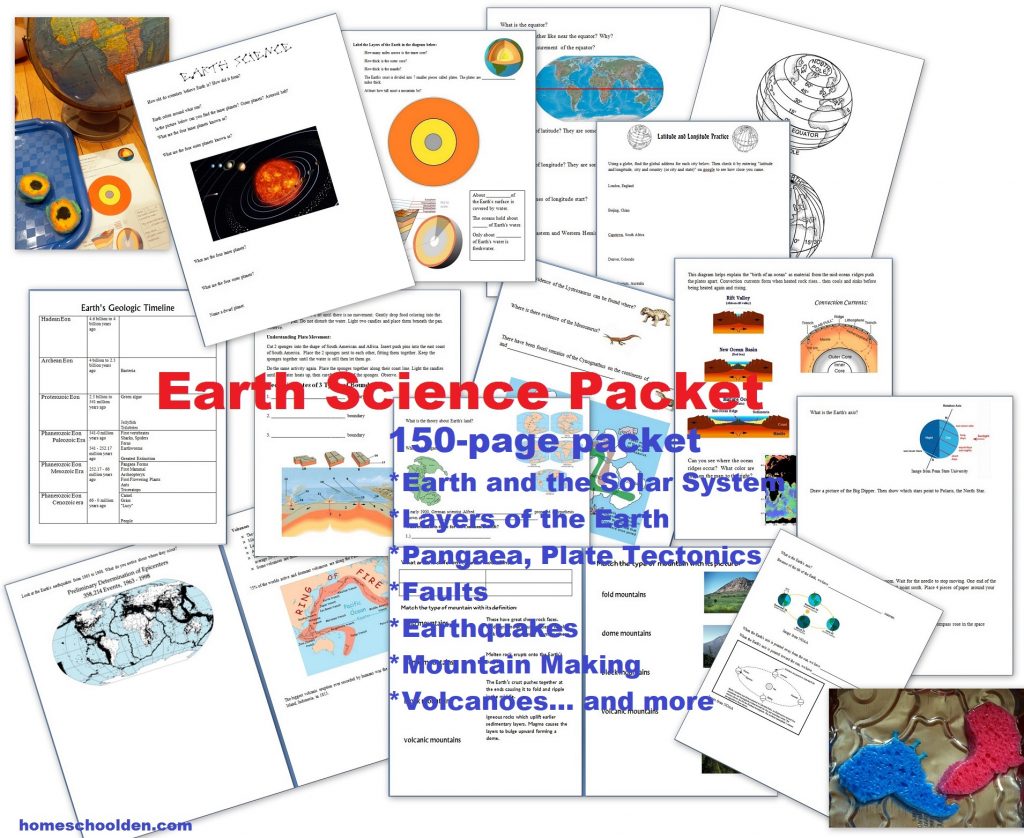
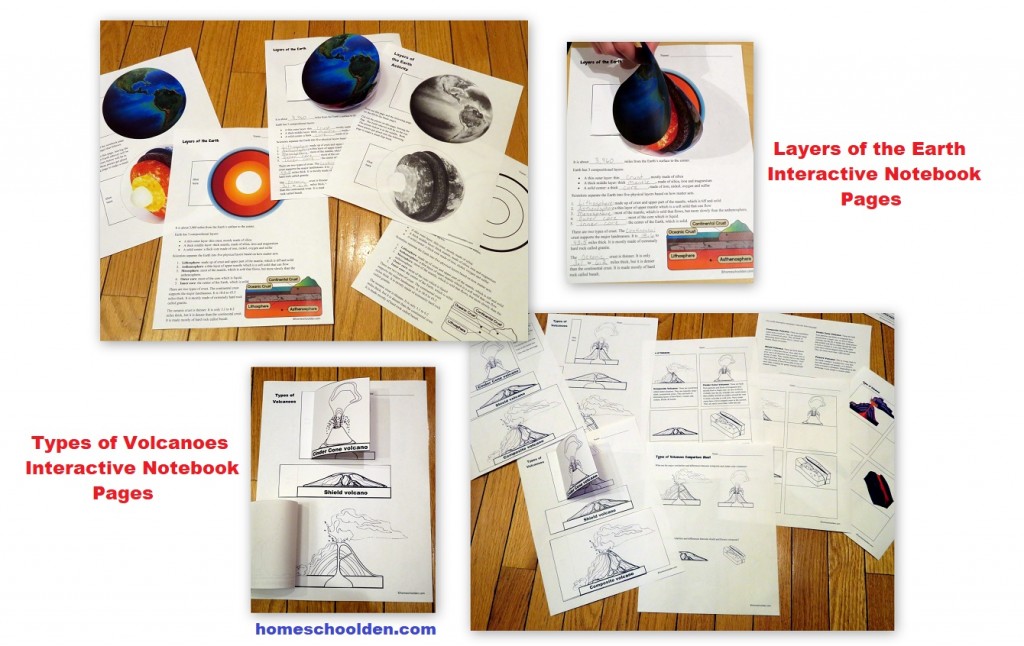

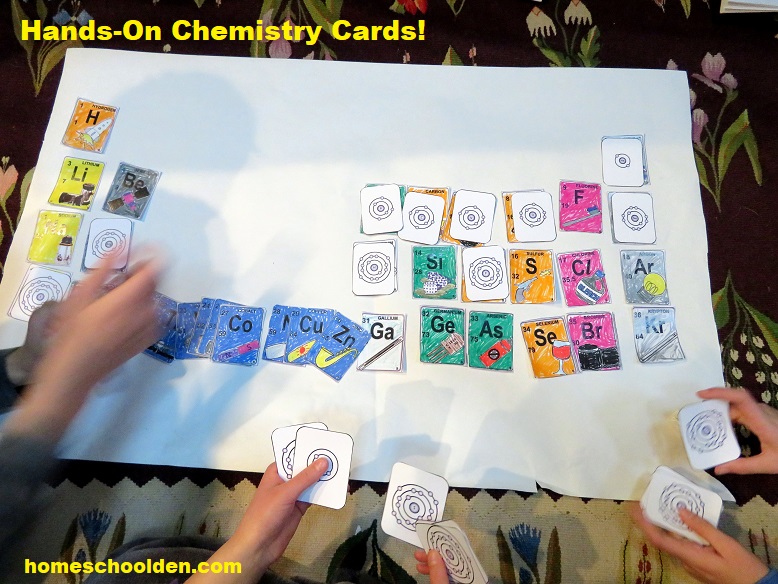
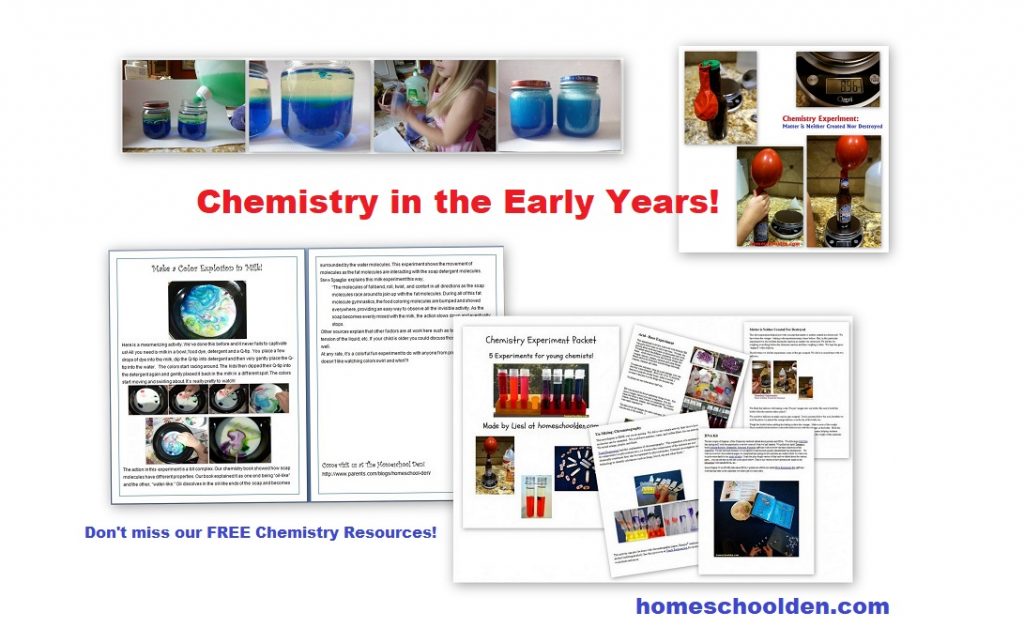
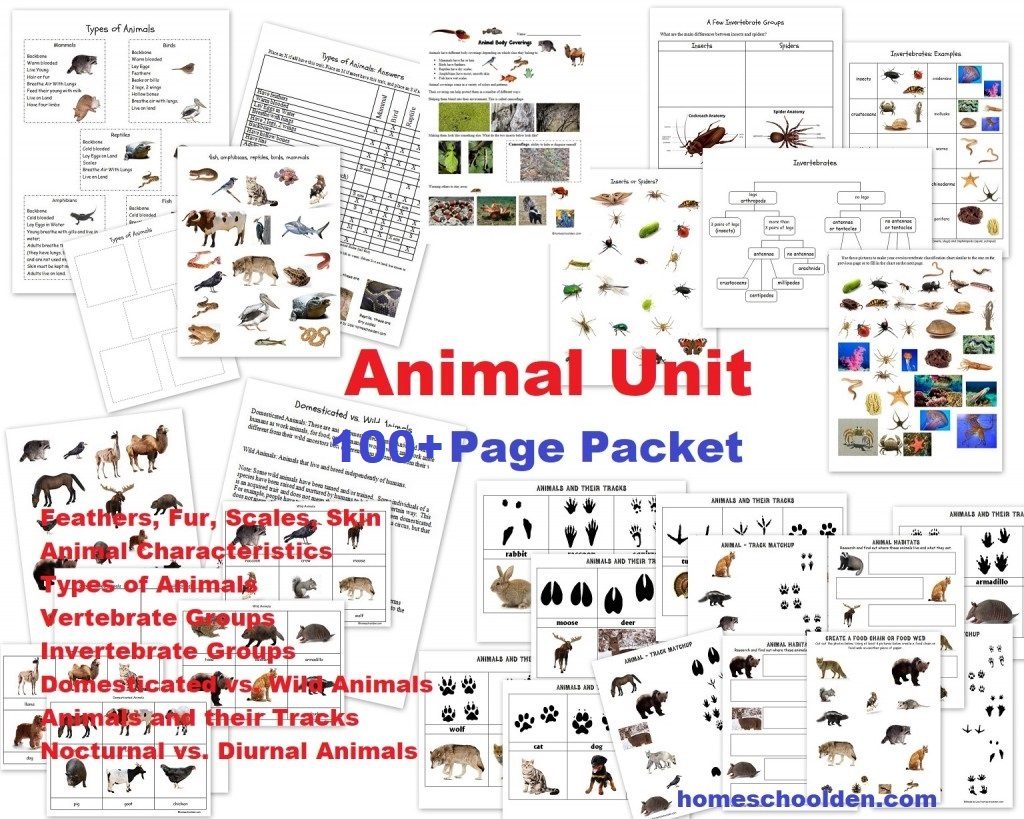
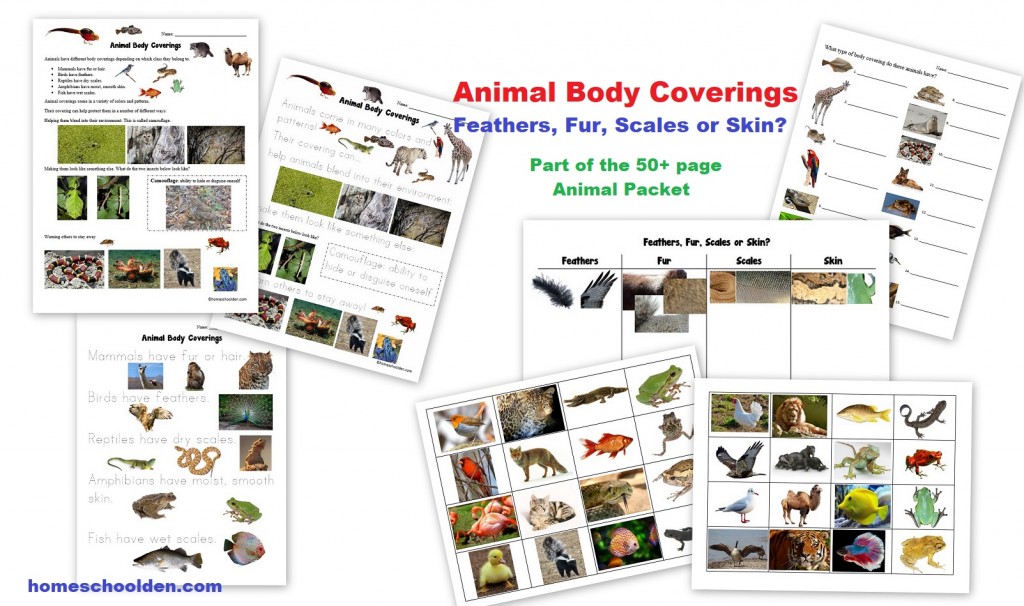
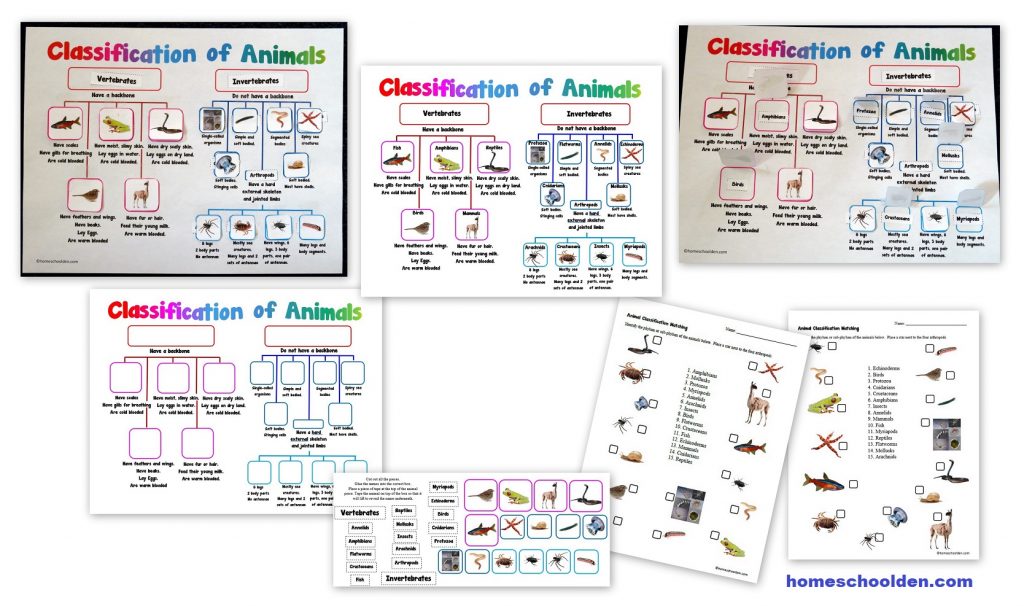
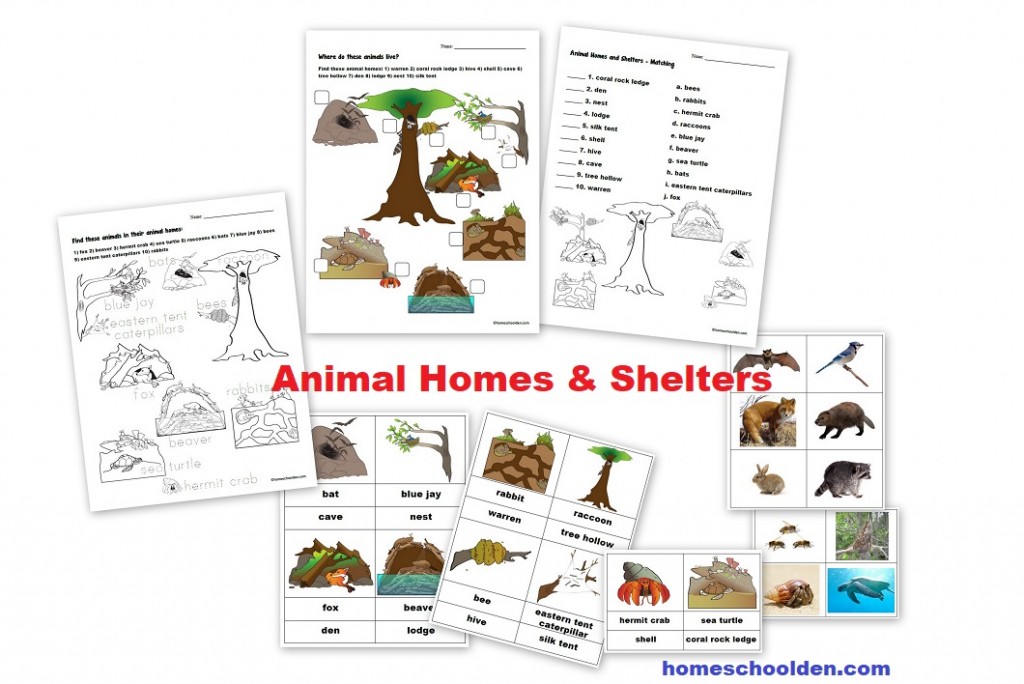
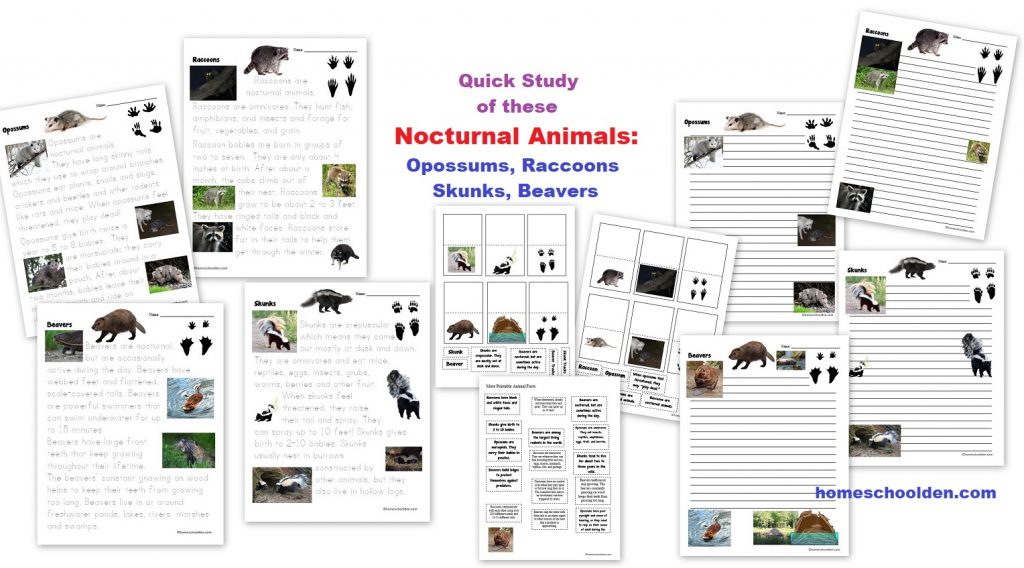
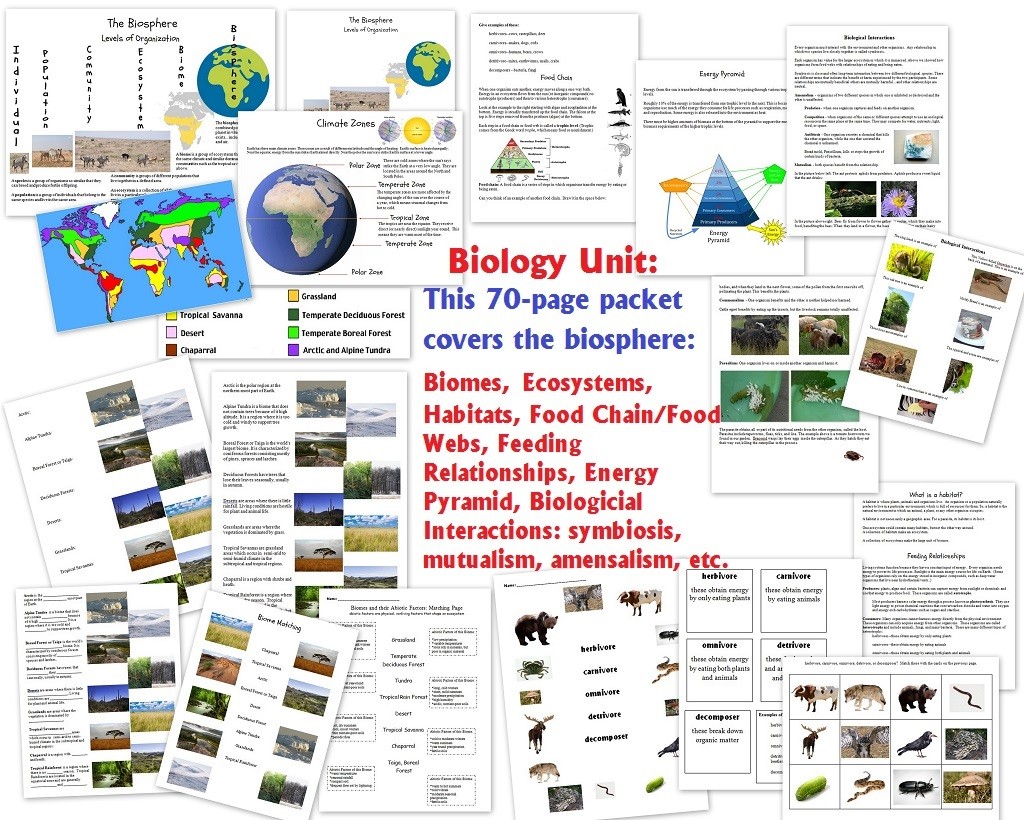
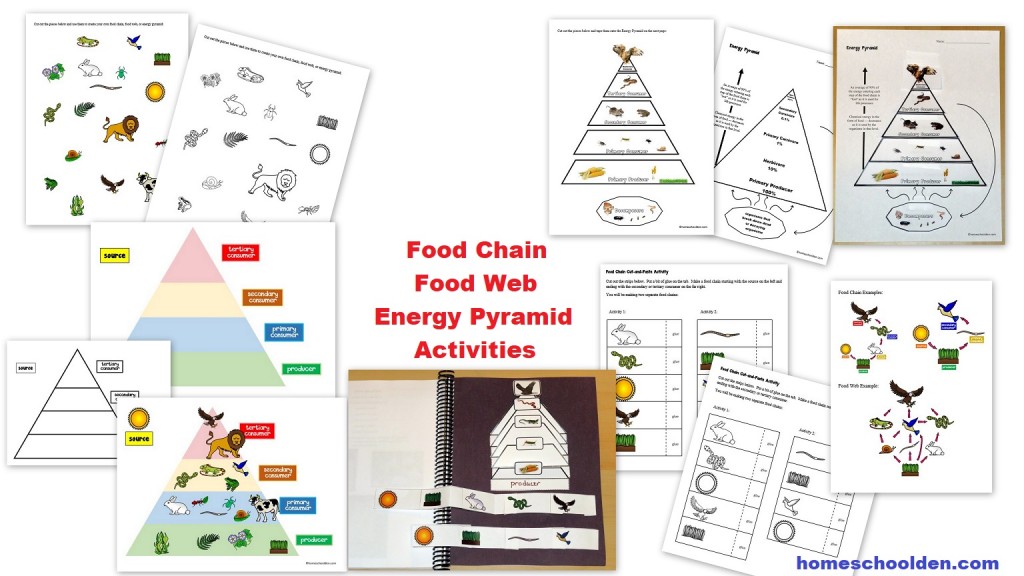
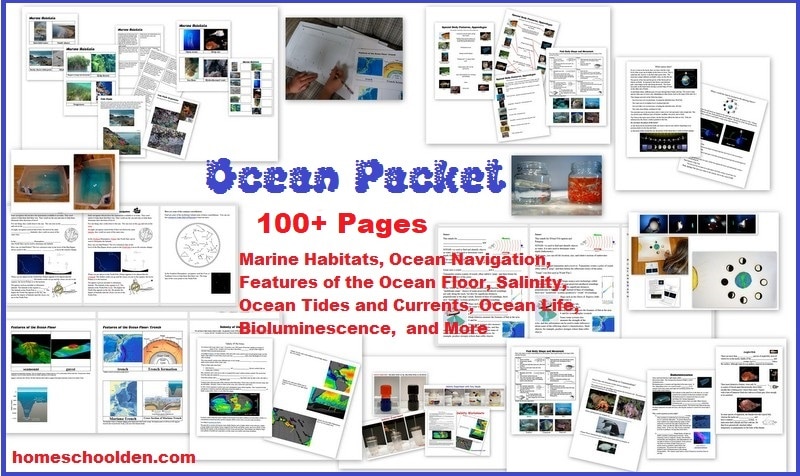
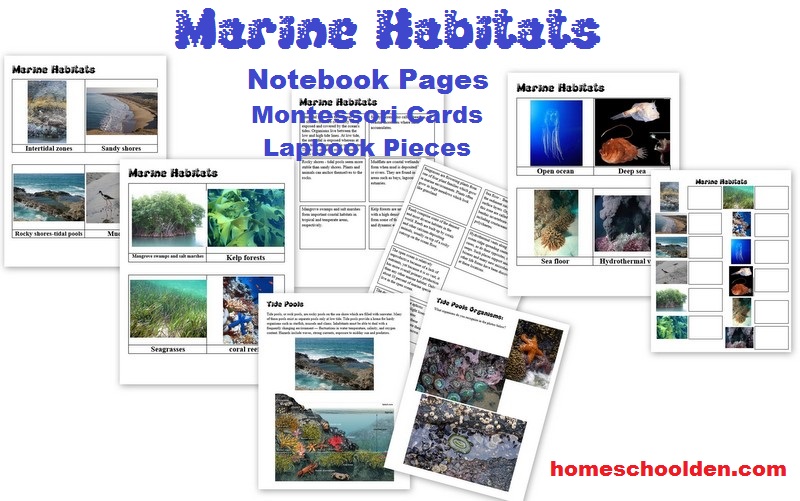
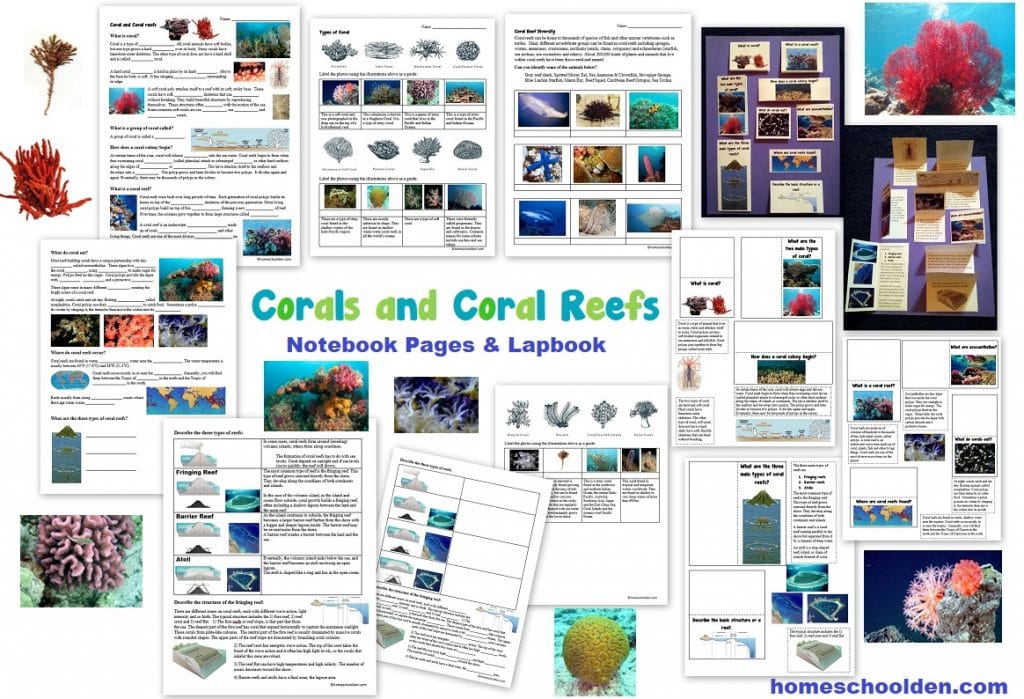
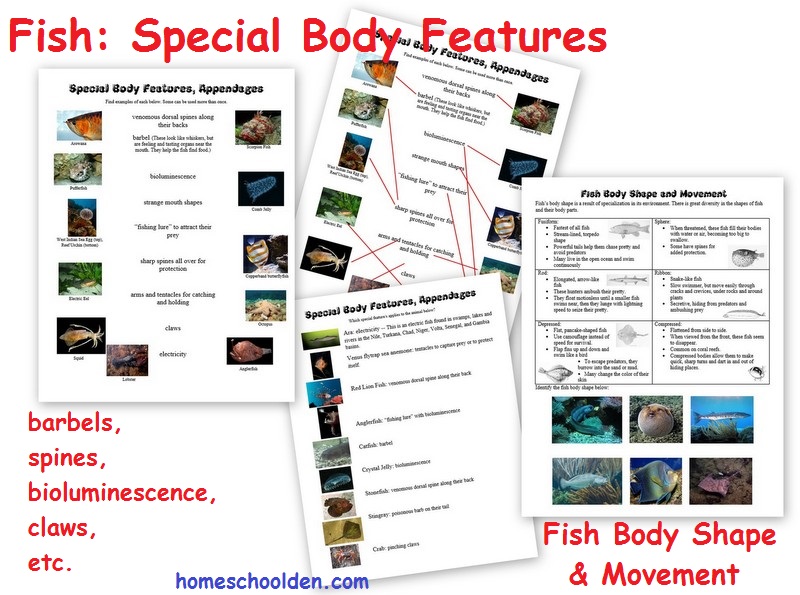
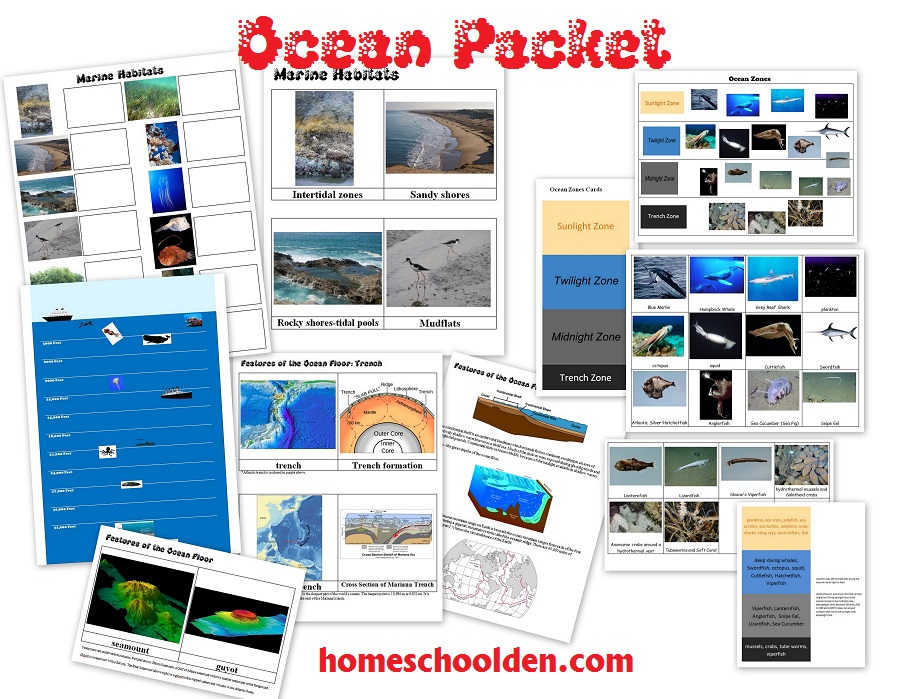
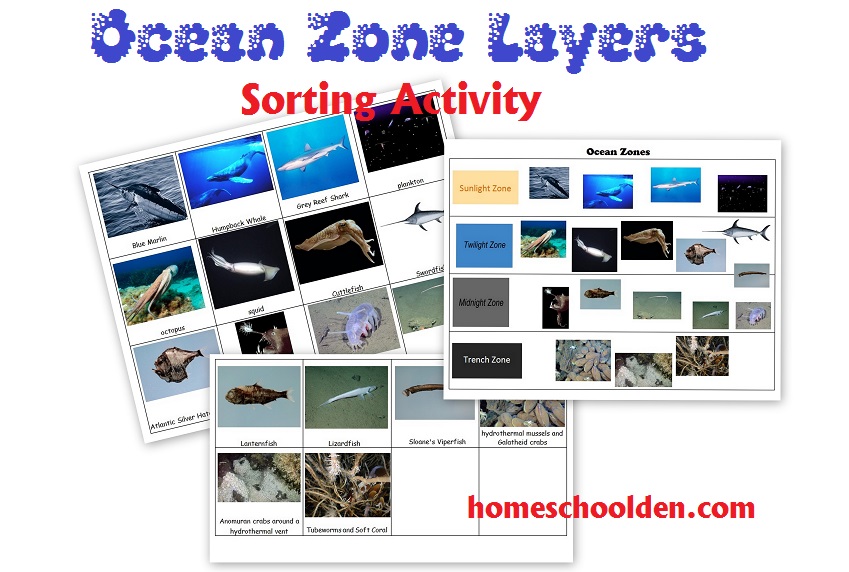
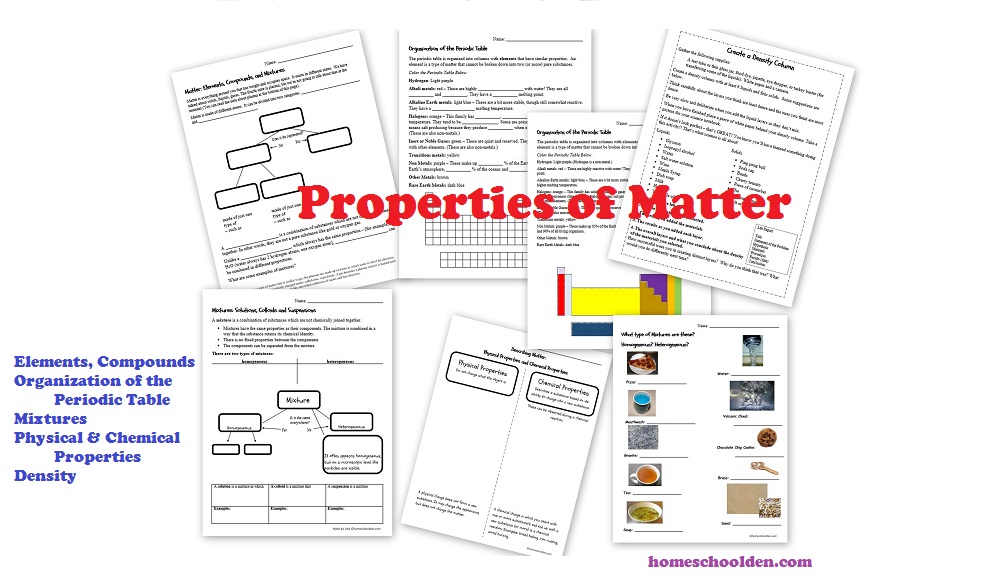
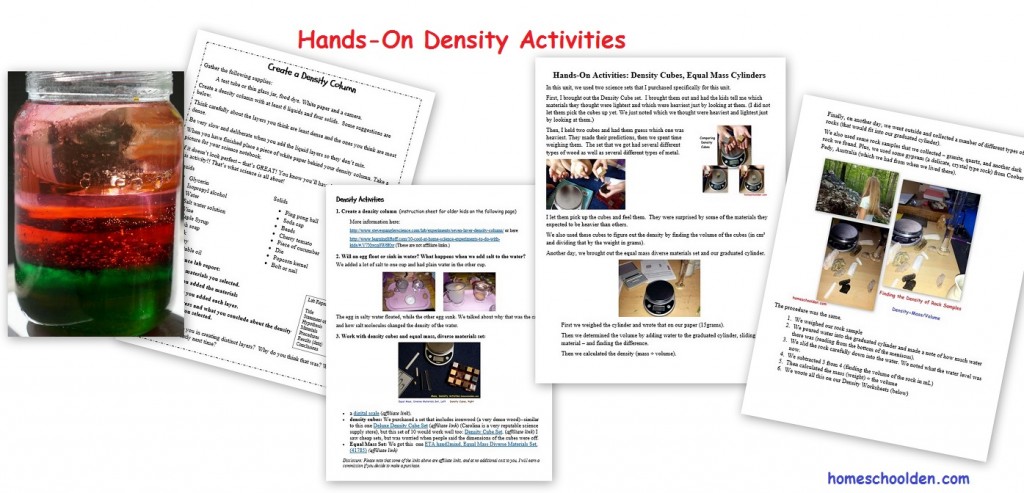
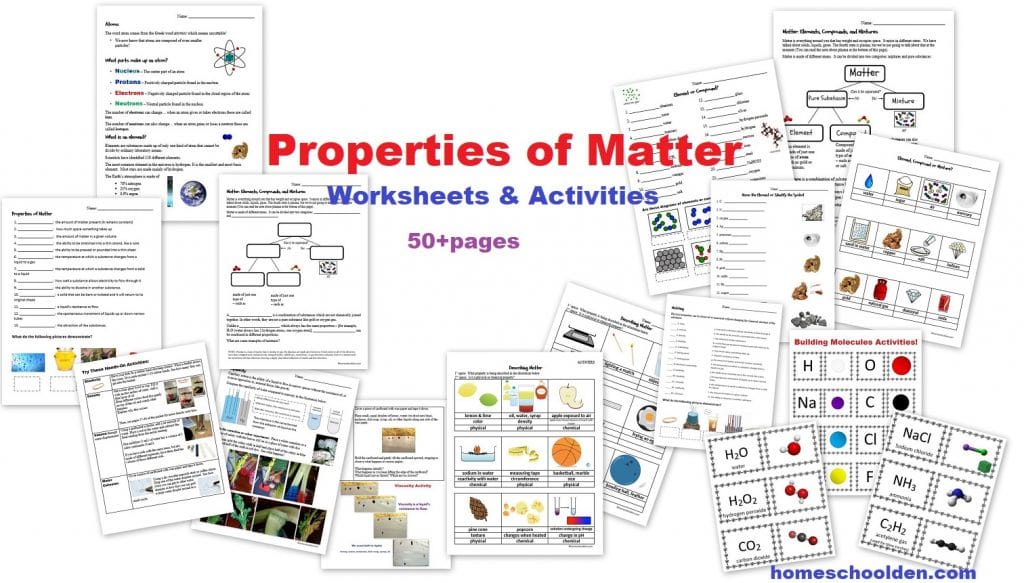
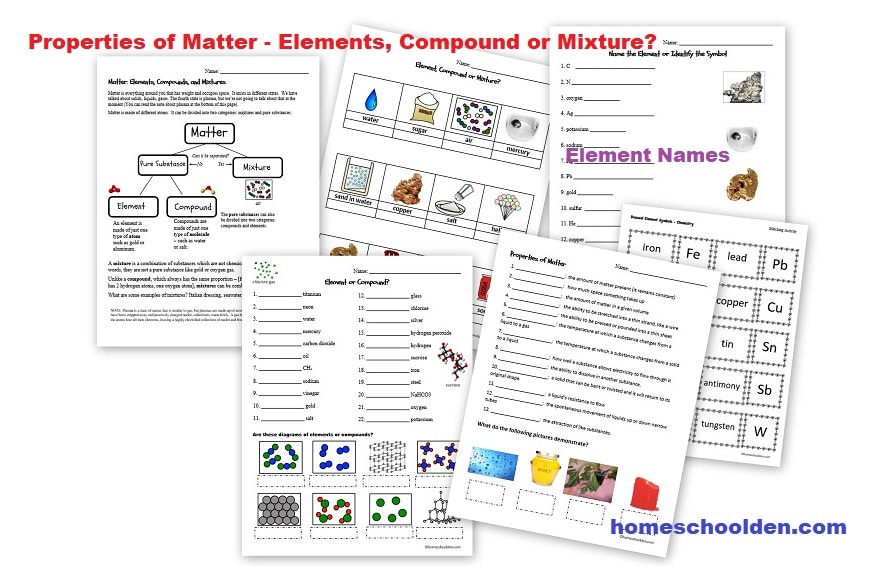
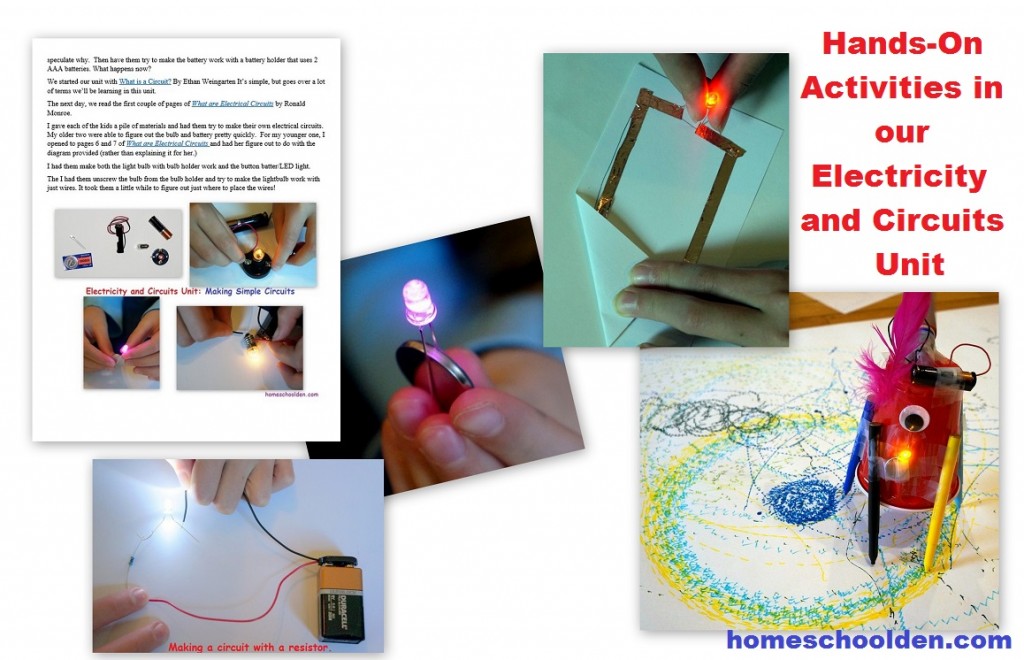

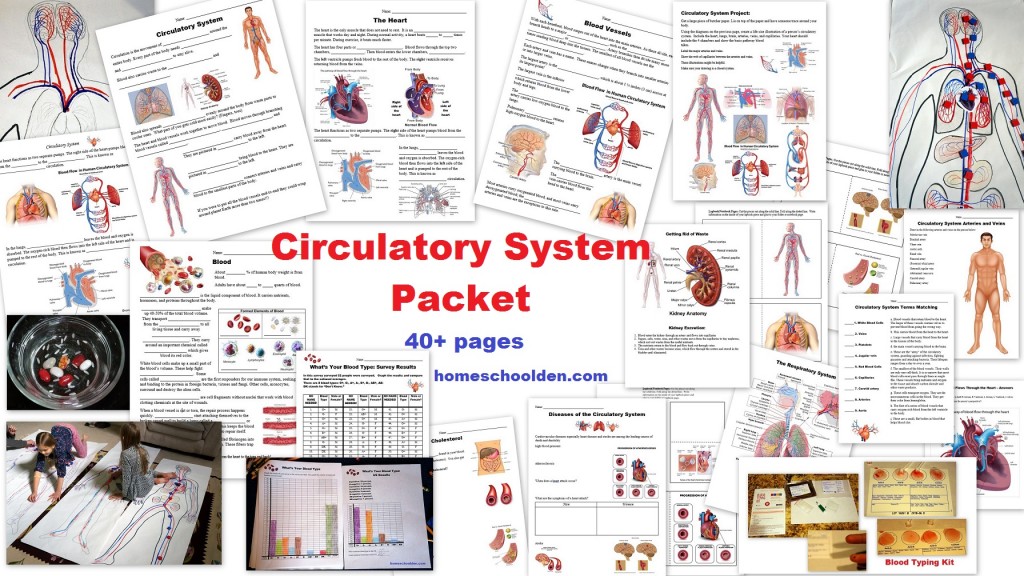
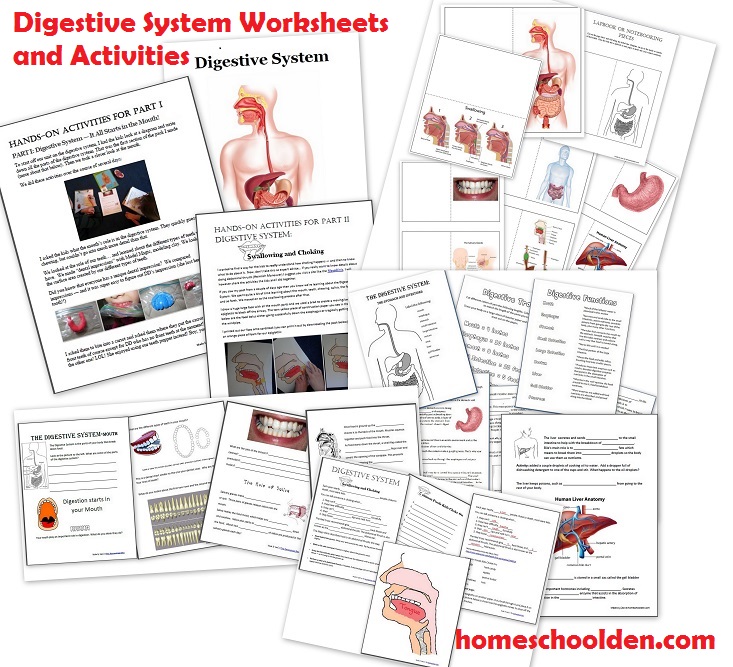

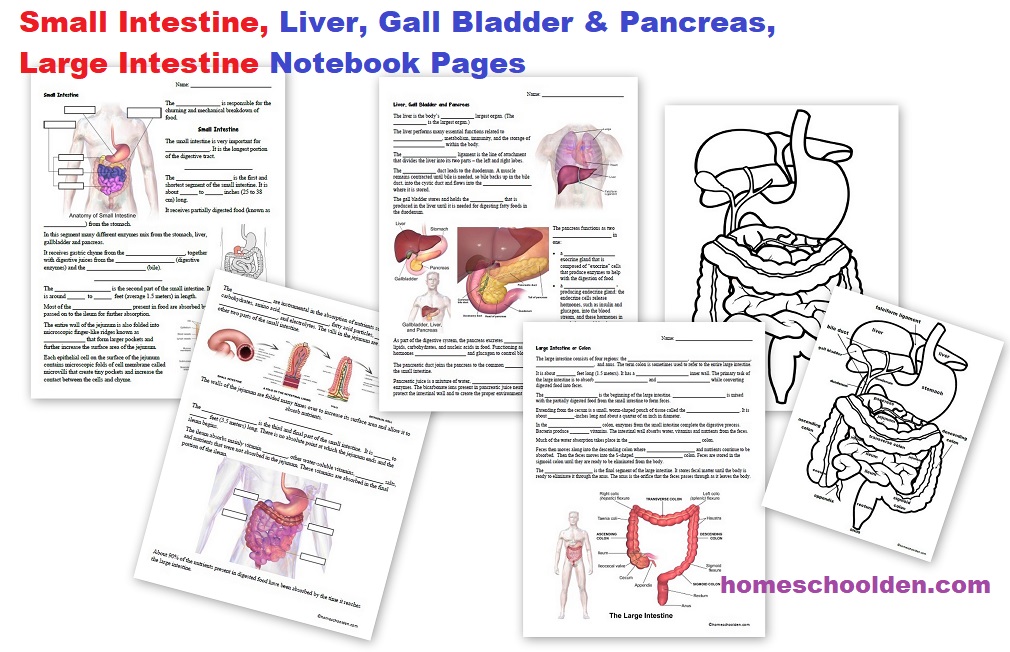
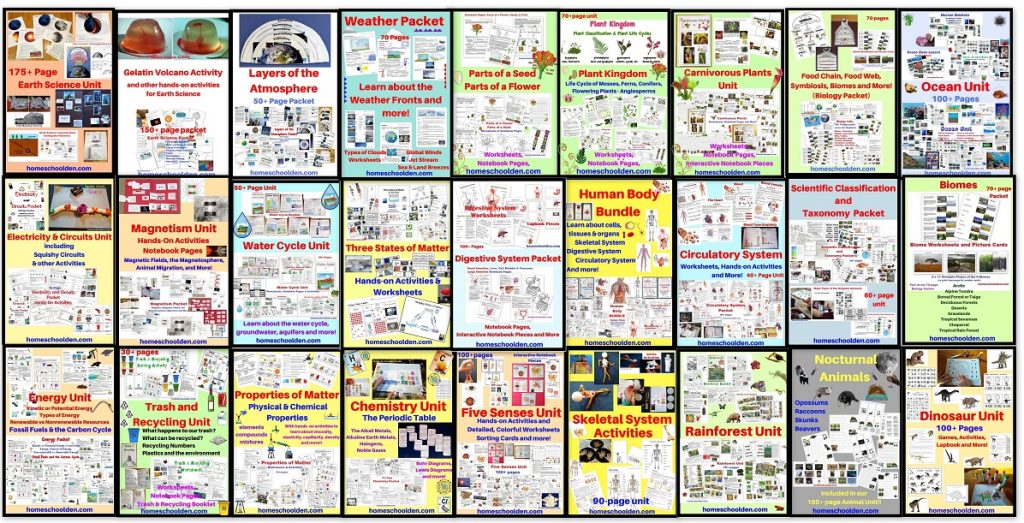
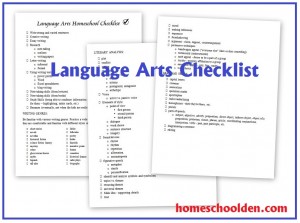
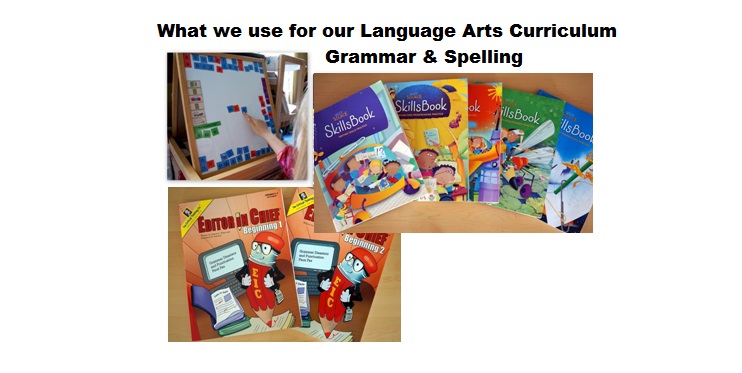
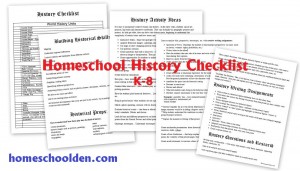





















































What a great resource! I am so excited – I have been trying to figure out what we are doing and this is a gold mine of information! My son is in 7th grade and we have just started homeschooling. Thank you!
I’m so glad this will be helpful! 🙂 ~Liesl
Such awesome resources!! I especially like the anatomy and in depth cell information
Thanks–Glad you found this helpful! ~Liesl
Thanks for such a great resource!
Thank you very much for providing everything you have for people to use. I’m fairly new to homeschool and I am a bit overwhelmed at how to fit it all in! I’m excited to use your resources and your references.
Cheers!
Hi Kari,
I’m glad our materials can be of some help! Every family’s journey is very different and it’s been a joy sharing some of the activities and things that have worked for us. For sure, we won’t cover everything I’d like to, but that’s okay! It’s about planting seeds, finding the excitement in learning, and finding joy in our homeschooling life — as much as it about covering this or that. Anyway, I say all that because I think everyone feels overwhelmed from time to time. We all just jump in feet first and take it from there. 🙂
Warm wishes for a *terrific* homeschool year!! ~Liesl
Hi, I have to admit we have had a rough start but I am now looking forward to our homeschooling journey after finding your website. Thank you for allowing us to access your material. When does your eldest start high school? My eldest is 14.
Regards Jo – New Zealand
Hi Jo,
I’m sorry to hear homeschooling got off to a challenging start. It can take a while to find your groove. My oldest is now in 8th grade; he’s 13. Our school year just started in August. (I say that because I assume New Zealand’s school year starts in January like Australia, right?) I also have a daughter who is in 6th (age 11 very soon) and another daughter who is in 3rd grade this year. Just to add in… My kids were all born in Central Australia (we lived there for 12 years). 🙂 We had the privilege of visiting New Zealand (both islands)… We enjoyed Rotorua in the north — and found the south island to be breathtaking (Milford Sound, the mountains, etc.) That was all before we had kids. Hopefully we can get back there some day!! 🙂 ~Liesl
Love to this,how to get more.
Hi Maria,
If you are looking for specific units or topics, you might want to check out these resource pages:
History Units – http://homeschoolden.com/history-units/
Science Units: We absolutely ♥ love hands-on science activities. We do a lot of science experiments as we do our science units. You might find something useful here: http://homeschoolden.com/science-units/
Language Arts — We have tons of free grammar pages on things like comma rules, their/they’re/there and more. http://homeschoolden.com/language-arts-resources/
We also have free Curriculum Resource Guides broken down by grade. I put these together to show the subjects we did by grade.
Creating a Homeschool Curriculum: Kindergarten – Grade 1 – http://homeschoolden.com/2016/11/06/creating-a-homeschool-curriculum-kindergarten-grade-1/
Creating Your Homeschool Curriculum: Grades 2-3, Resource Guide – http://homeschoolden.com/2016/11/21/creating-your-homeschool-curriculum-grades-2-3-resource-guide/
Creating Your Homeschool Curriculum Grade 4-5 — Free Resource Guide – http://homeschoolden.com/2017/03/17/creating-your-homeschool-curriculum-grade-4-5-free-resource-guide/
Creating Your Homeschool Curriculum Grade 6-8 — Free Resource Guide – http://homeschoolden.com/2018/04/29/how-to-homeschool-grades-6-8-curriculum-guide/
Hope these help. Let me know if you have any other questions or if there is anything I can do to help! ~Liesl
Grammar Practice-worksheets-free